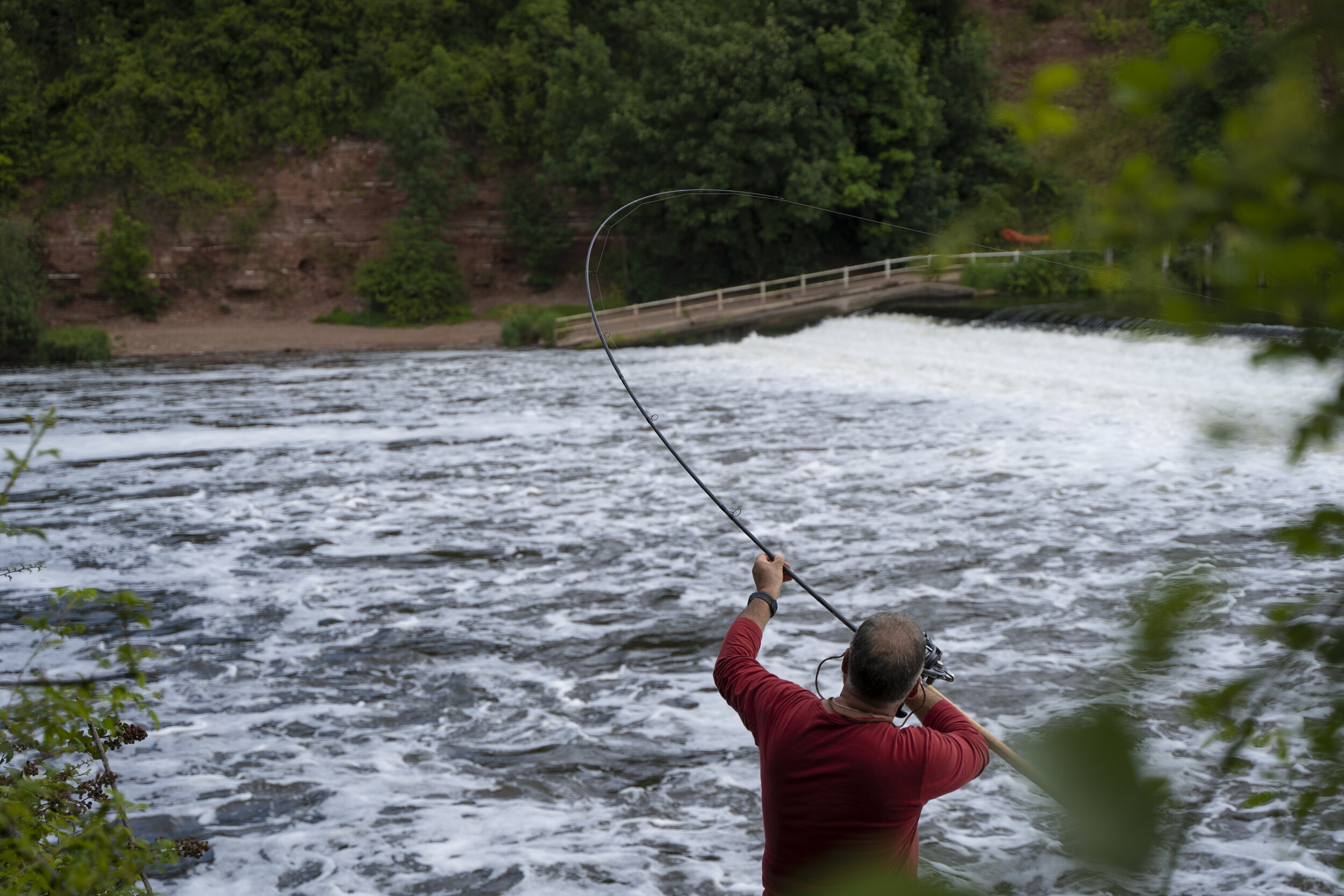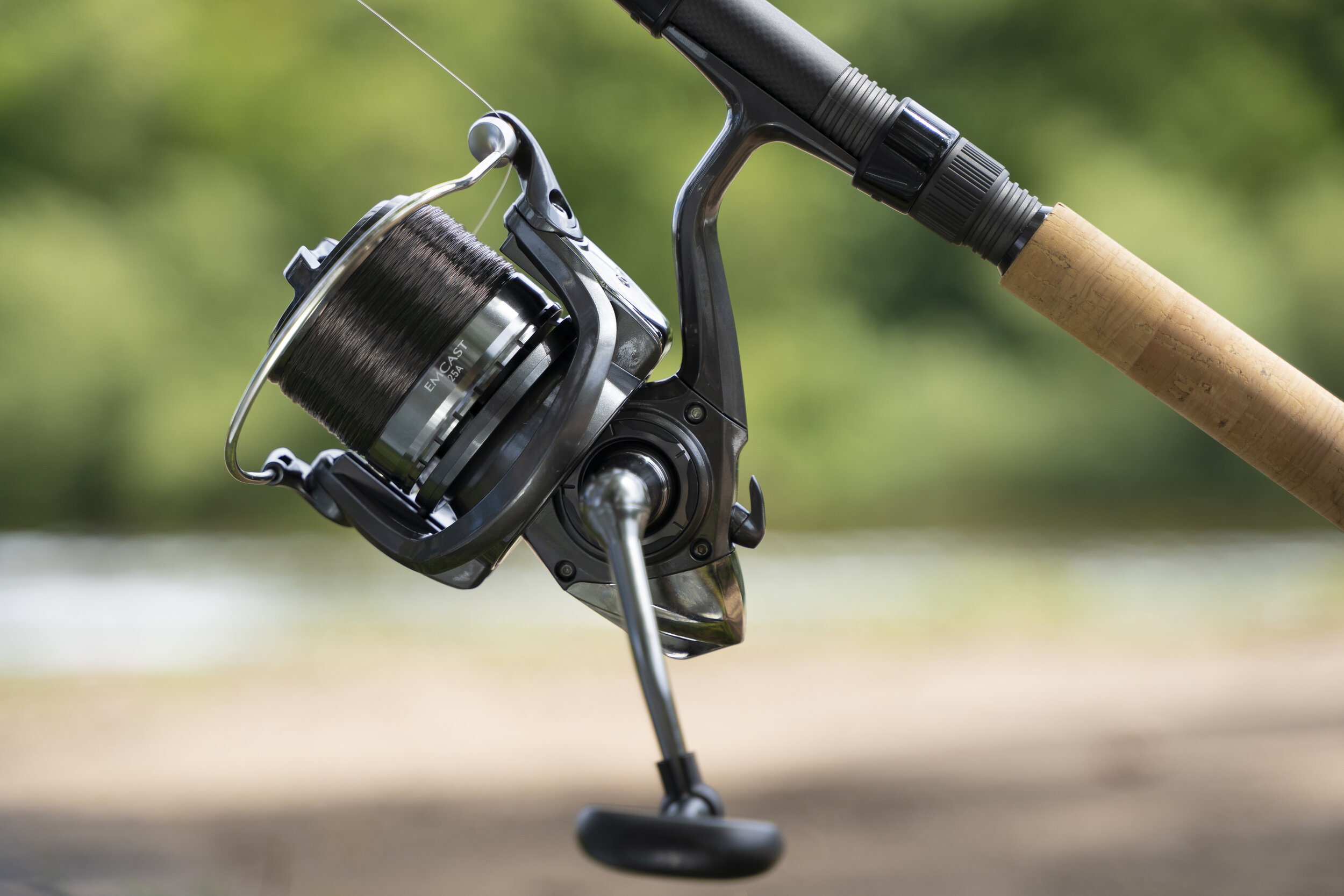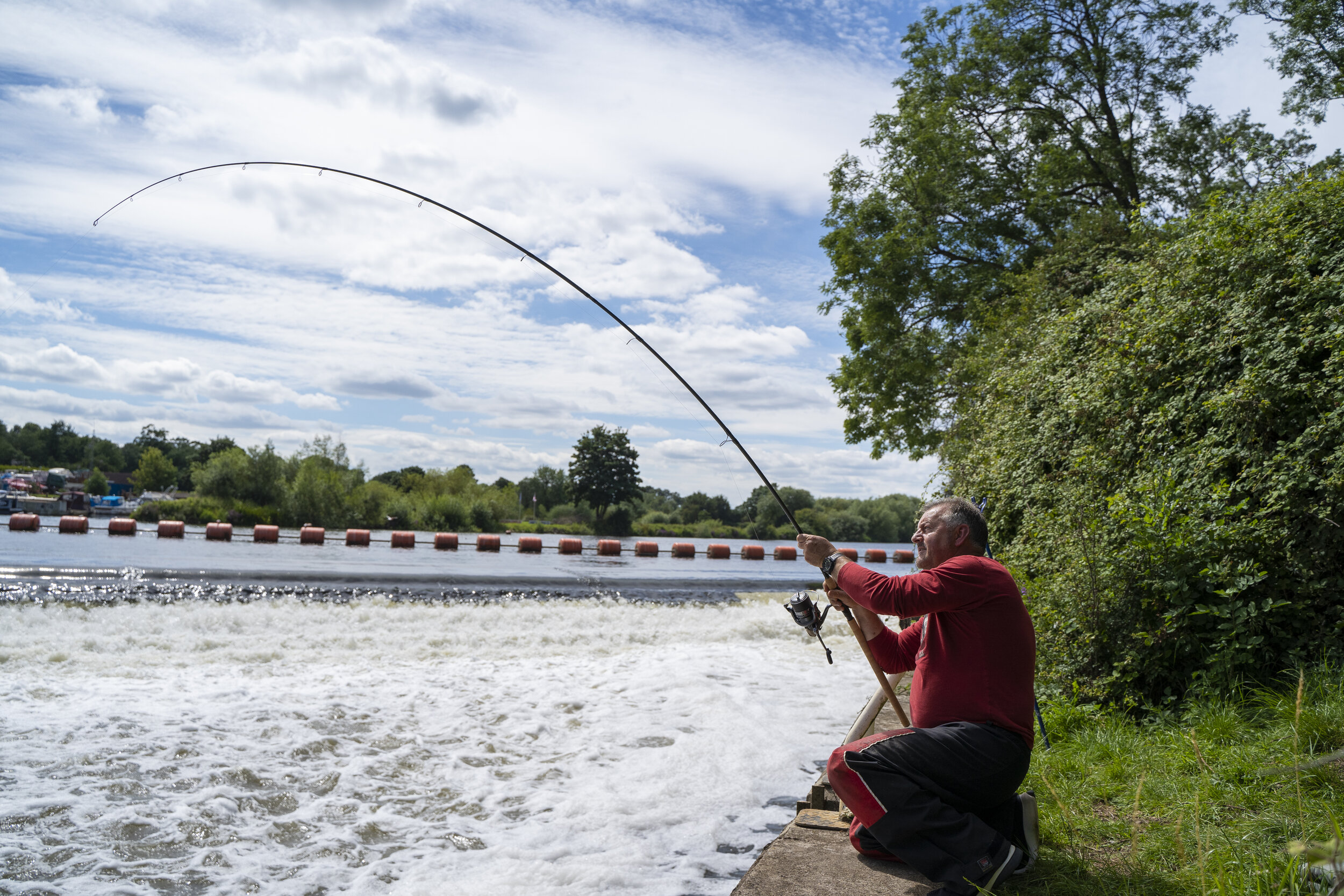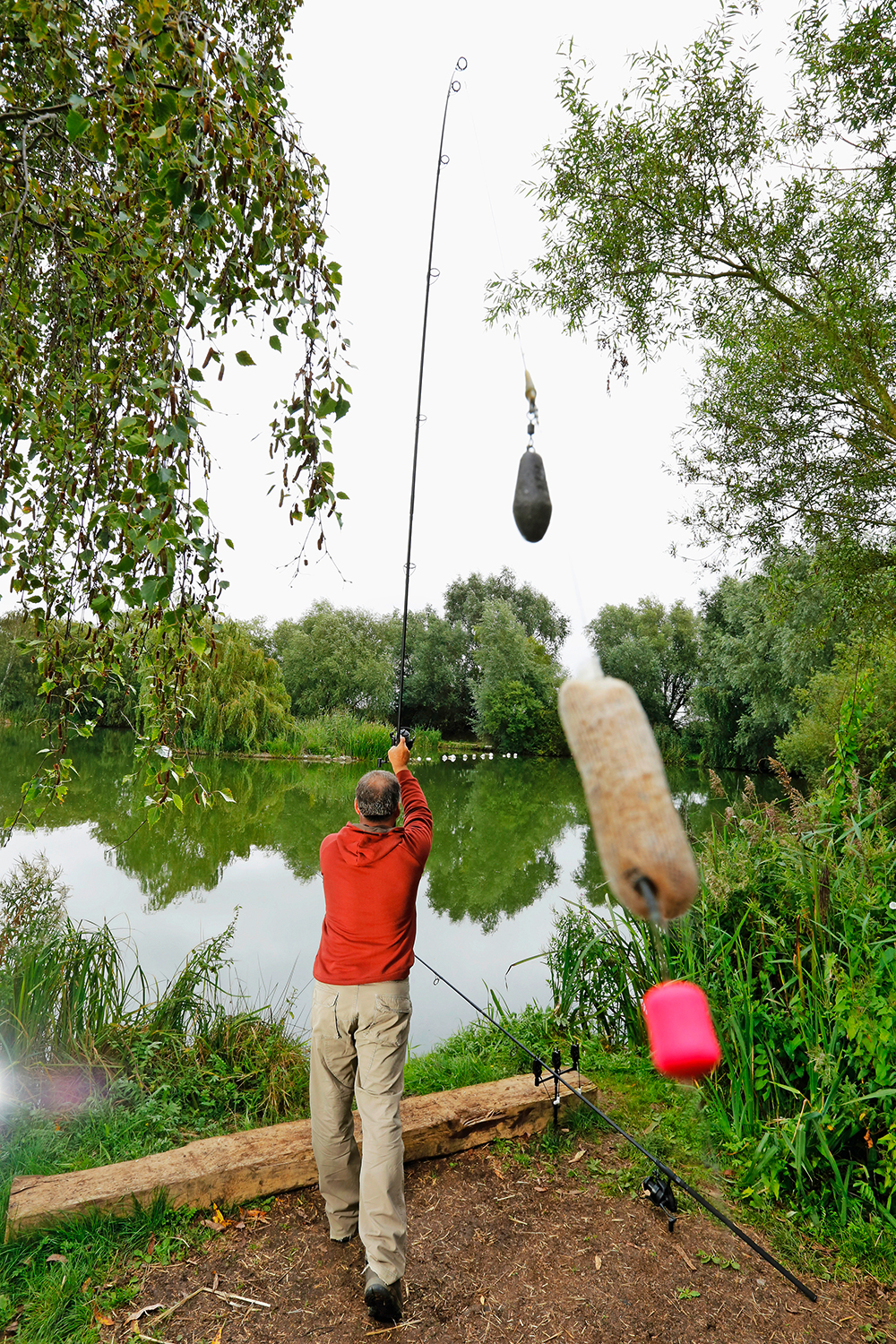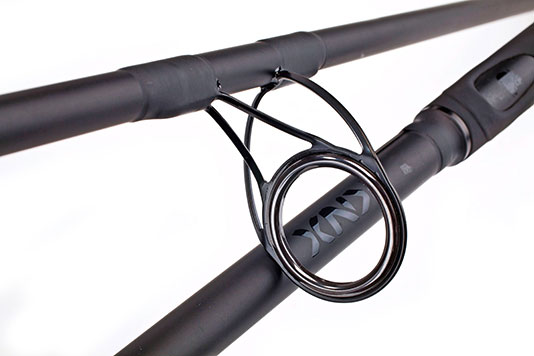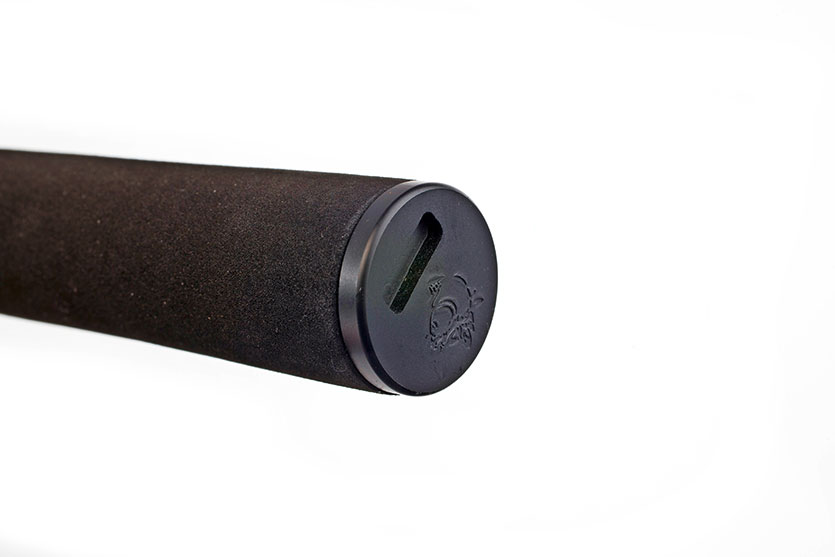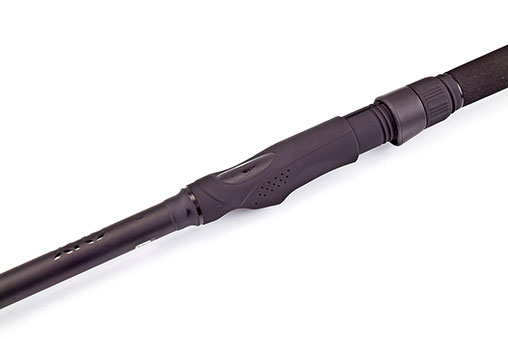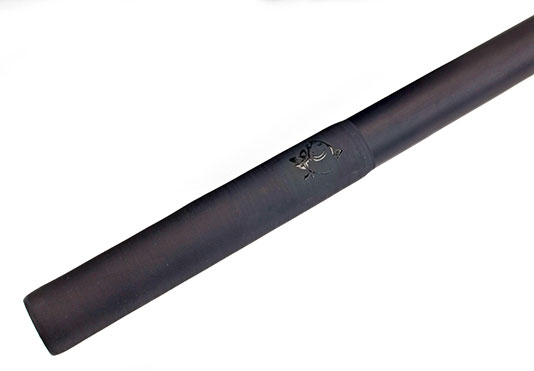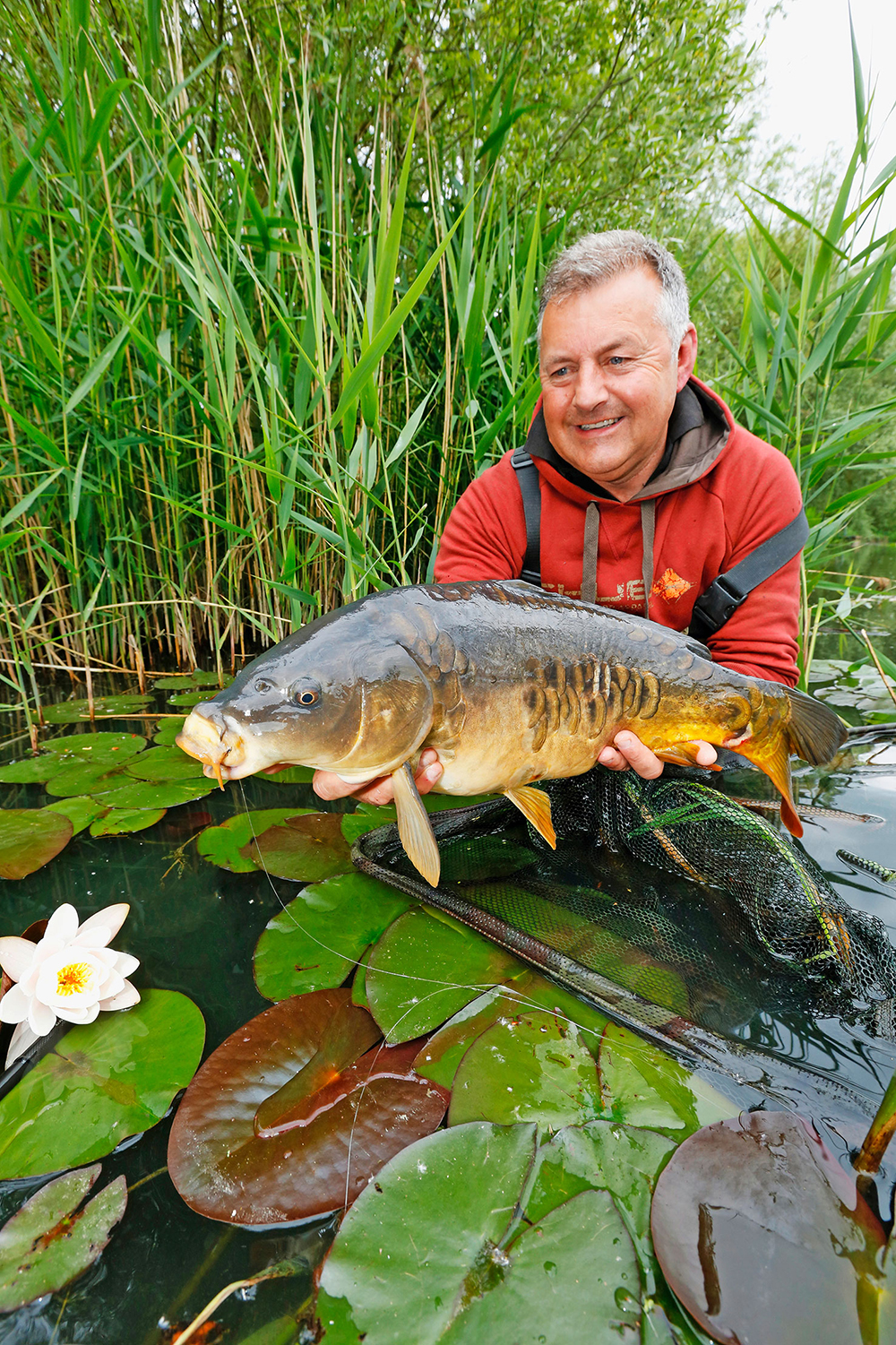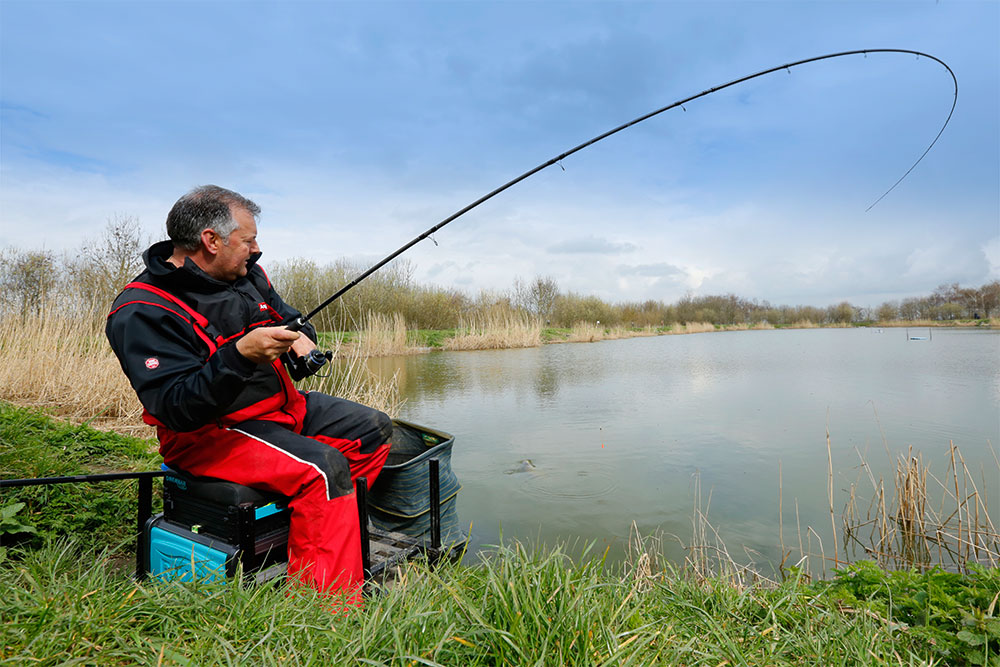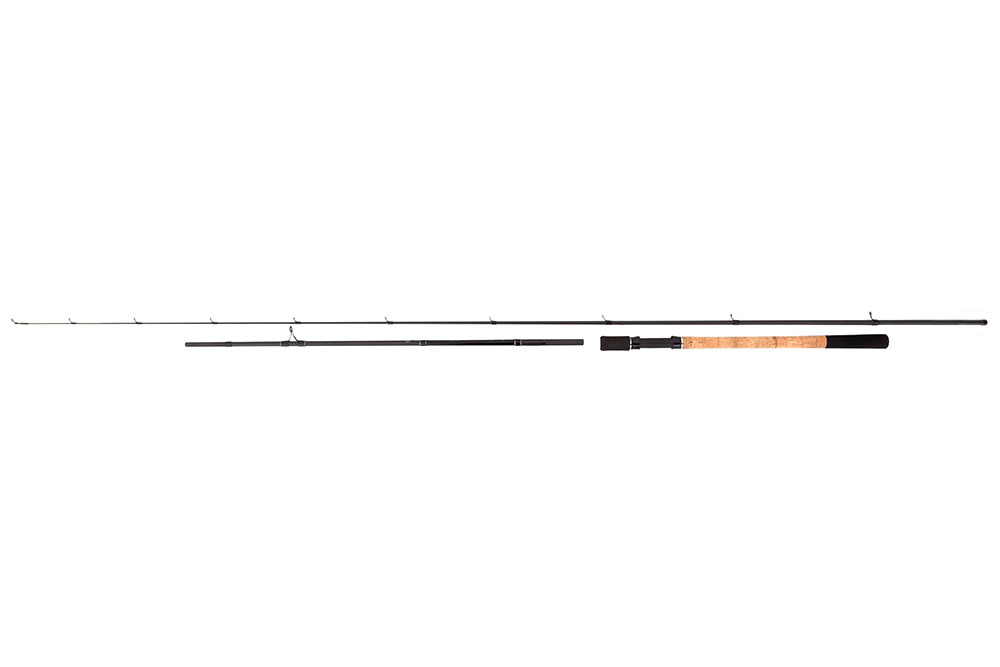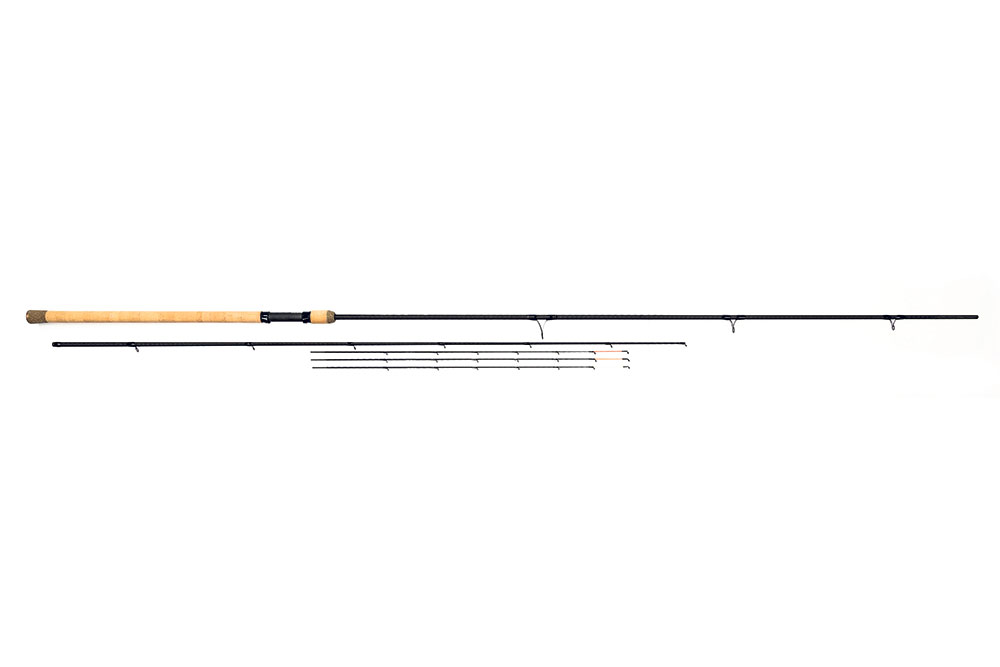Daiwa Powermesh B2 2.25lb test curve rod & Daiwa Emcast 25A reel on test!
THE year was 1974 and I remember it like it was yesterday – Mud’s Tiger Feet had been at No1 for weeks and I’d just met my future wife at school, although I didn’t know it then. Harold Wilson was Prime Minister, and those pesky Germans had won the World Cup for the second time (and two more to come, but I didn’t know that either).
More importantly, my dad had landed a new job with Yorkshire TV, had moved up to Huddersfield and was spending his spare time barbel fishing on the River Swale.
School holidays couldn’t arrive quickly enough. We simply didn’t have barbel nosing around in the Rivers Evenlode or Windrush close to my Oxfordshire home. To this angling-mad lad, catching one became a teenage obsession.
Well, the big moment finally arrived on the banks of the Swale at Skipton. That fish fell to a cube of Bacon Grill (Dad’s favourite). There it lay in the net, seven pounds of statuesque bronze magnificence!
These days, Dad’s living in Italy, chasing carassio and carp, while I live close to the Trent where barbel grow to immense proportions. Ranks of green and camo-clad anglers line its banks looking like soldiers going into battle, as well they might, because the fighting qualities of a natural-born Bertie are more than a match for the stoutest tackle and strongest nerves.
All this brings me to the subject of this week’s Live Test, the latest incarnation of Daiwa’s two-sectioned 12ft Powermesh B2 barbel rod, available in 2.25lb and 2.75lb test curves.
Daiwa had also kindly sent in its new gunmetal grey Emcast 25A reel, which I really liked the look of the moment I saw it.
I don’t know anywhere better to test rough-and-tumble barbel gear than the Trent’s boisterous Gunthorpe Weir. It’s a heaving, boiling, foam-flecked torrent of water whose deafening roar blots out every other sound.
The Trent’s Gunthorpe Weir is the perfect testing ground
An extraordinarily exhilarating angling experience it may be, but boy is it tough on tackle! It’s a boulder strewn snag-pit, and even with Arnie-grade end gear you’re never going to land everything you hook.
I filled the stunning-looking Emcast reel with 15lb Daiwa Sensor line, which you could use to haul a tractor out of a ditch. It was probably a bit overgunned for use with the lighter 2.25lb Powermesh B2 rod that I had chosen to use, mainly because it’s likely to be the one most anglers will prefer.
The Emcast Reel looks simply stunning
I didn’t need to cast anything weightier than a 2oz lead and a PVA bag. The rod has a 150g (5oz) recommended maximum casting weight, but if I were using anything approaching that or casting over 75 yards I would opt for the 2.75lb Powermesh B2.
With a small bag of pellets and meat, and three hair-rigged cubes of porky goodness, it wasn’t long before I had my first bite, and it took even less time for the fish to get itself set firmly into a snag. Fish one, Mark nil.
A simple set-up for barbel
Twenty minutes later the rod top nodded, then the line went slack with a massive drop-back bite. As I wound down to the fish it took off at an astonishing rate of knots, straight across the white water. Happily the Powermesh had enough backbone mid-section to pile on the pressure, despite its fairly soft through action – I’d describe it as forgiving but firm.
Eventually the fish came up in the foam, but the 11lb hooklength had somehow wrapped itself around a loose bit of floating branch. Two attempts to net the whole lot in one go failed dismally, and a desperate third go at scooping up what looked to be a 10-pounder ended in failure. Fish two, Mark nil. Not the rod’s fault, nor the reel’s. Bad angling? You be the judge, but like I said, this isn’t a swim for the faint-hearted.
The Powermesh rod is forgiving but firm
The sun rose, the temperature soared, and I wondered if my chance had gone. Nope, the rod buckled over and it was game on... alas, the line fell slack again just as quickly, and it really was all over. Fish three, Mark nil.
The day wasn’t a complete wash-out, as a decent chub put another bend in the Powermesh, although nothing compared to the brute force of a wild barbel.
This faultless two-piece rod is mellow yet gnarly and growly and would suit nearly all UK rivers. The new Daiwa Emcast reel is just fab – it has an impeccable line lay, and enough winding power to cope with the heaviest of feeders and leads.
A brilliant combination
I really enjoyed its tough and robust feel, which is just as well for a reel likely to get chucked around a riverbank and needing to cope with hauling in double-figure fish. It even comes with a spare spool, so next time I go out with this dream rod-and-reel team I hope to get my three-point win with those barbel.
Price: Rod £126, Emcast reel from £74.99
Greys Toreon Tactical Float and Feeder rods
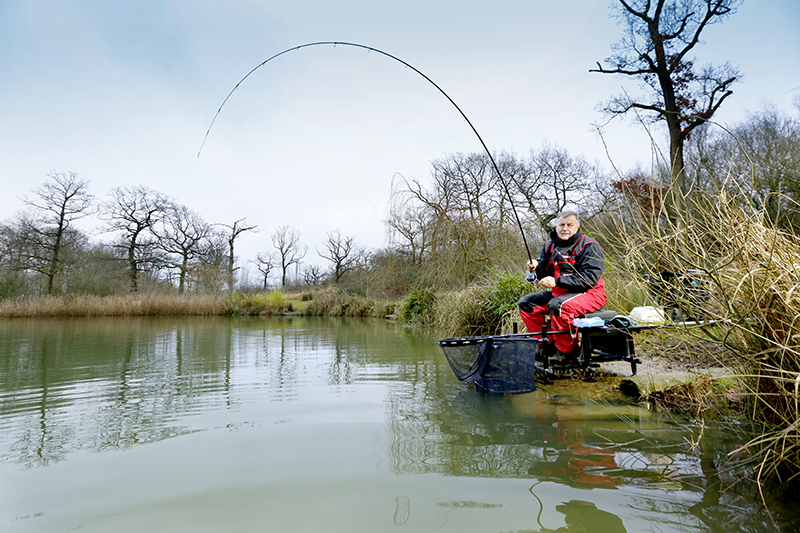
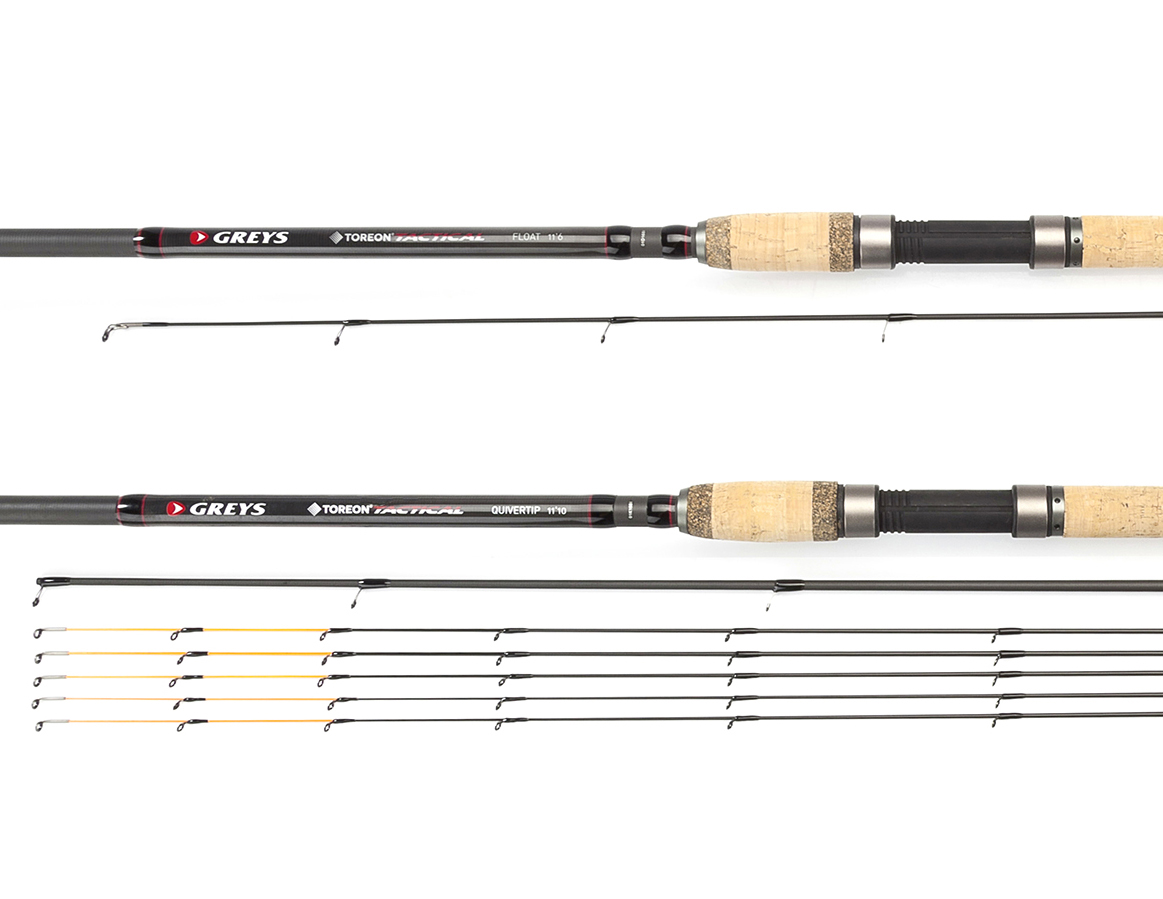

Greys has an impressive track record for iconic fishing rods – names such as Prodigy, Platinum and Air Curve are all instantly recognisable to big-fish anglers who demand the best.
So when news broke of a new rod range aimed at the serious coarse angler I just had to get my hands on a couple. The full Toreon Tactical family features four quivertip rods at 10ft 6ins, 11ft 10ins, 12ft 6ins and 13ft.All come with five graded carbon push-in quivertips. There are also five float rods in lengths of 10ft 6ins, 11ft 6ins, 12ft 8ins, 13ft and 15ft. Combine these with the quivertip rods and you have a rod arsenal able to tackle every imaginable venue, from tiny ponds to raging rivers.
Built from high modulus, lightweight Toreon nano-carbon, all rods are amazingly strong and responsive, and furnished throughout with quality lightweight gunsmoke SiC guides. Detachable cork butt grips allow for compact storage and variable handle lengths. These will be a blessing on the longer rods, giving more casting clout to those who like to whack it out a bit. The two rods on test, an 11ft 10ins quiver and an 11ft 6ins float model, should between them cover most ‘middle of the road’ situations and deal with everything from big commercial carp to shy-biting silvers. This in itself is quite unusual in an era when most modern coarse rods are built to do a specific job.
I would suggest, though, that if (after reading this review) you are interested in owning a Greys Toreon Tactical rod, you take a closer look at the full range before making your choice with so many rod lengths and recommended line strengths there will be something perfect for every fishery you may visit during the course of a season. Bearing that in mind, I took the test rods to a mixed fishery, the superbly well attended and blissfully peaceful day-ticket Wold Farm in Northamptonshire (www.woldfarmfisheries.co.uk). When the float dips or the tip goes round on Wood Lake you can never be too sure what’s having a nibble on the other end – it’s a kind of aquatic Bingo.
Starting on a 3AAA insert peacock waggler with a lightish 0.11mm hooklength and size 18 hook baited with double maggot, the 11ft 6ins two-sectioned rod soon put a few roach and half-decent skimmers into the netThe blank is crisp and responsive, with the backbone to cast big floats (including pellet wagglers up to 15g) without a hitch. Unfortunately, I didn’t catch anything hefty enough to test its anti-locking action, but for silvers alone it’s just about light enough to put a bend in the tip. The 11ft 10ins Toreon Tactical quiver rod was tested rather better as a run of pastie-sized carp took a liking to my bread disc hookbaits. The feisty little fellows showed plenty of spirit, but the blank’s flat spot-free action shrugged off their struggles and they were soon peering through the mesh of my keepnet.
It’s more than capable of handling medium-sized Method feeders, but although Greys rates its maximum casting weight at 185g (6oz-plus) that’s a tad optimistic in my opinion. I particularly liked the five blaze-coloured carbon quivertips which add to the rod’s versatility and help prove its worth as an all-rounder.
THE VERDICT
If you’re a journeyman coarse angler looking for a ‘one rod does it all’ bank side companion, then one – or perhaps two – from the new Toreon Tactical range are more than likely to be sliding into your rod holdall soon. Quality and performance are virtually guaranteed from Greys, one of the UK’s longest-surviving tackle companies with a fine history of producing hard-wearing, long-lasting and thoroughly satisfying fishing rods.
Mark Sawyer
PAY AROUND
£99.99 - £129.99
Browning Commercial King Tickler fishing rods
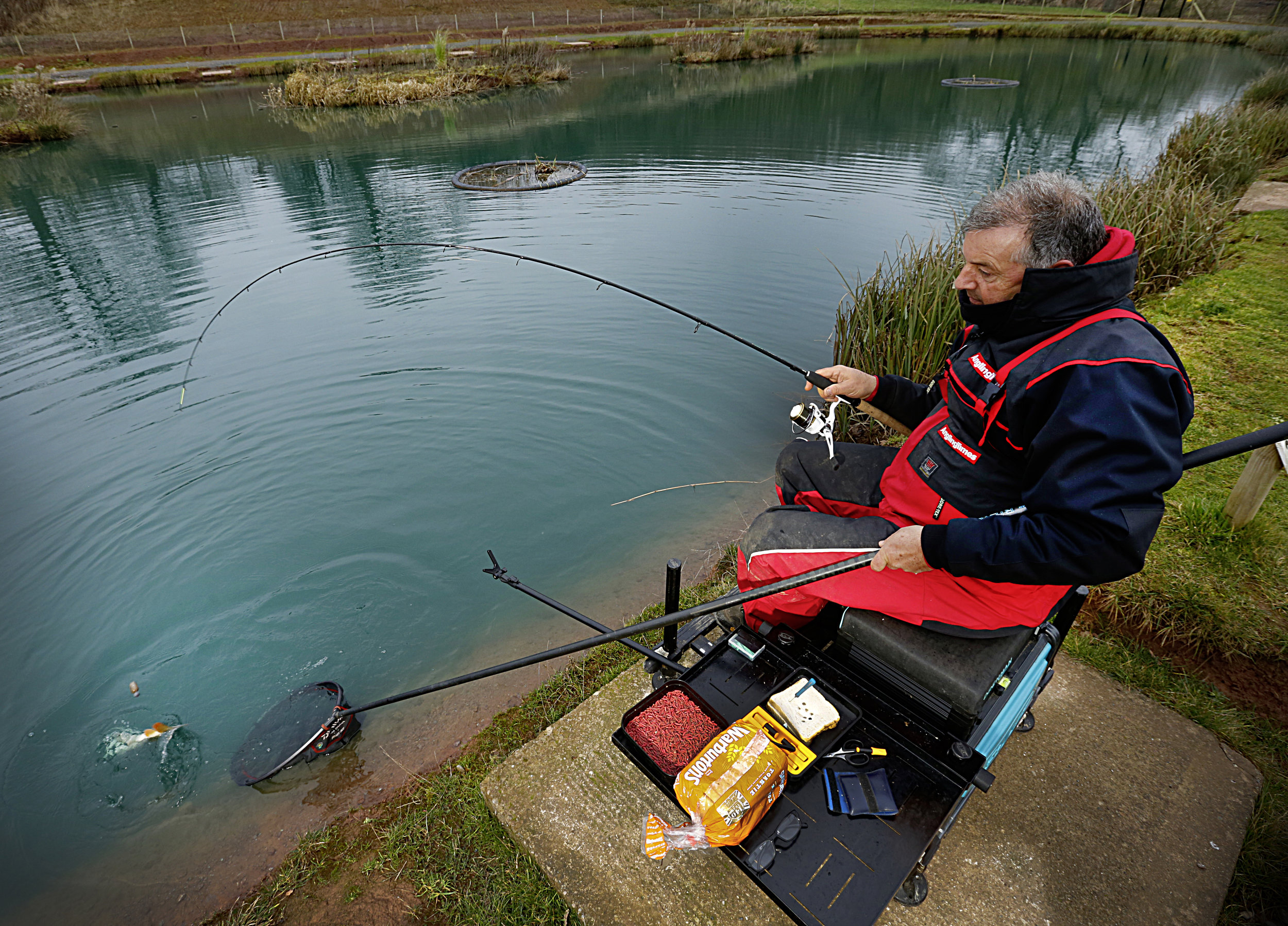
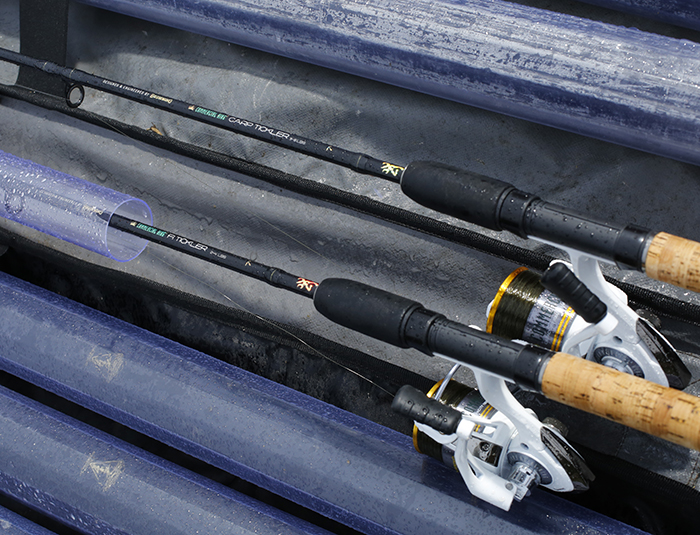
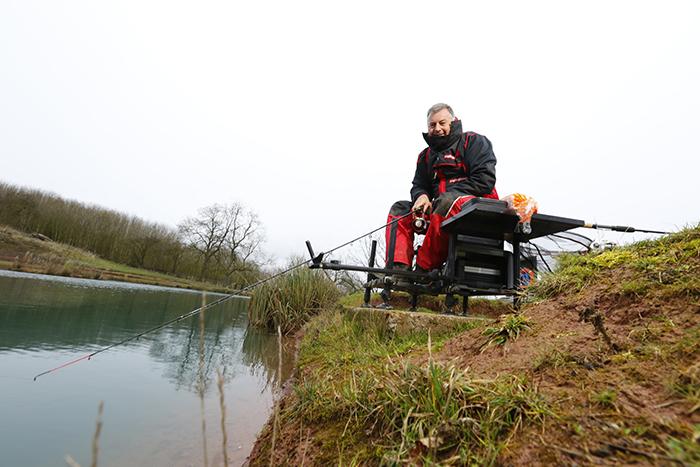
These tiny wands are called Ticklers – did Ken Dodd invent them so his Diddy Men could go fishing?
Well, oddly enough, no. These pint-sized single-sectioned Carp and F1 models are the latest additions to Browning’s popular Commercial King range. There’s nothing new about short or indeed single-sectioned rods, and few would argue against their having a place in the modern commercial match angler’s rod holdall. That is just where you can tuck your Tickler after a match, and very easily at that.
Simply remove the quivertip, place the hook into its retainer and reel up any slack line. Then it’s just a matter of folding the reel handle flat before sliding the rod into its slim, protective tube. There are no bands, sleeves or broken tips to worry about – the rod can be taken down and put up again quite literally in seconds.
For live test purposes I carried both versions to my peg at Monkhall Fisheries in Shropshire, ready made-up inside a standard rod bag containing five tubes plus a few mini pole extensions (and if you’re wondering about the blue colour of the water, it’s from a fish-safe dye used to keep weed growth to a minimum). Just to have them so close to hand and ready to use without the need to transport yet another rod holdall to the peg further endeared these rods of restricted growth to me. Yes, obviously they have their limitations, but for ease of transportation and convenience they tick my box.
The pair consists of a surprisingly substantial Carp Tickler model with a 50g (1.7oz) maximum casting weight, suitable for reel lines up to 8lb, and the lighter F1 rod with a casting weight of 35g (1.5oz) for reel lines up to 6lb breaking strain. The Carp Tickler has enough clout in its progressive fish-playing action to cope with specimens of 10lb-plus, while its lighter F1 counterpart shares the action while remaining just about light enough to handle small hooks and fragile hooklengths without risking hook-pulls or breakages.
During the live test, I fished for carp in deep water with the Carp Tickler set up with a 0.75oz straight lead and hair-rigged bread discs. I rigged the F1 rod with a 20g Drennan Carp feeder, size 18 hook and double maggot for fishing in shallower water up against an island.
During the session the wind got up from nowhere and, within seconds, wickedly cold snow flurries were driving across the lake. It really was ‘batten down the hatches’ stuff, but my fishing didn’t suffer at all, as the shortness of the rods had allowed me to tuck the rod-tips right into the bank. I hit every bite, and even when I had the brolly up I could still see the quivertips. As a bonus, I found I could net fish without having to negotiate the canopy of my brolly.
THE VERDICT
Well, I must admit to being completely sold on these new Browning Ticklers. I really liked the concept – packing away and setting up rods has never been easier or more lacking in fuss and drama. Being able to stick them inside my pole holdall was another big plus point. I found the Carp Tickler a little on the heavy side, and although I wouldn’t hesitate to use it for summer Method feeder margin work I would probably furnish myself with a pair of the F1 Ticklers for winter commercial fishing, preferring their softer cushioning action.
PAY AROUND
£79.95
Daiwa relaunches its Powermesh Specialist fishing rods
Daiwa has reintroduced its famous Powermesh rods which, back in the day, had a reputation among carp anglers for being cutting edge.
The latest seven-strong collection includes a dedicated 2.75lb test curve barbel rod for float and feeder use. The float rods come in 13ft, 14ft and 15ft lengths and are well suited to heavy waggler and deep-water slider work using reel lines from 3lb-10lb. A crisp action makes them ideal for long-trotting with Avons and big stick floats on fast-flowing rivers for chub and barbel.
The three feeder models (11ft 6ins, 12ft 6ins and 13ft 6ins) all come with quivertips of 1.5oz, 2oz and 3oz test curves, and would seem to be as much at home with open-end feeders for summer tench as they would be tempting winter river chub using maggot and bread feeders.
With casting weights of up to 50g, 70g and 90g, respectively, each rod is built to take lots of stick, reflected in the use of high-grade carbon cloth with a 1k carbon weave along the butt sections for added resilience.
As you’d expect from Daiwa, the classy non-flash matt-black blanks are of the finest quality, with full cork handles, original Fuji DPS reel seats, stainless steel guides with lightweight LS ceramic rings, and hard-wearing aluminium butt caps. All these work together to give the rods a pleasing custom-built aesthetic look.
PAY AROUND
£107.99 to £125.99
Quantum PT Accurist Spin fishing rod 2.03m
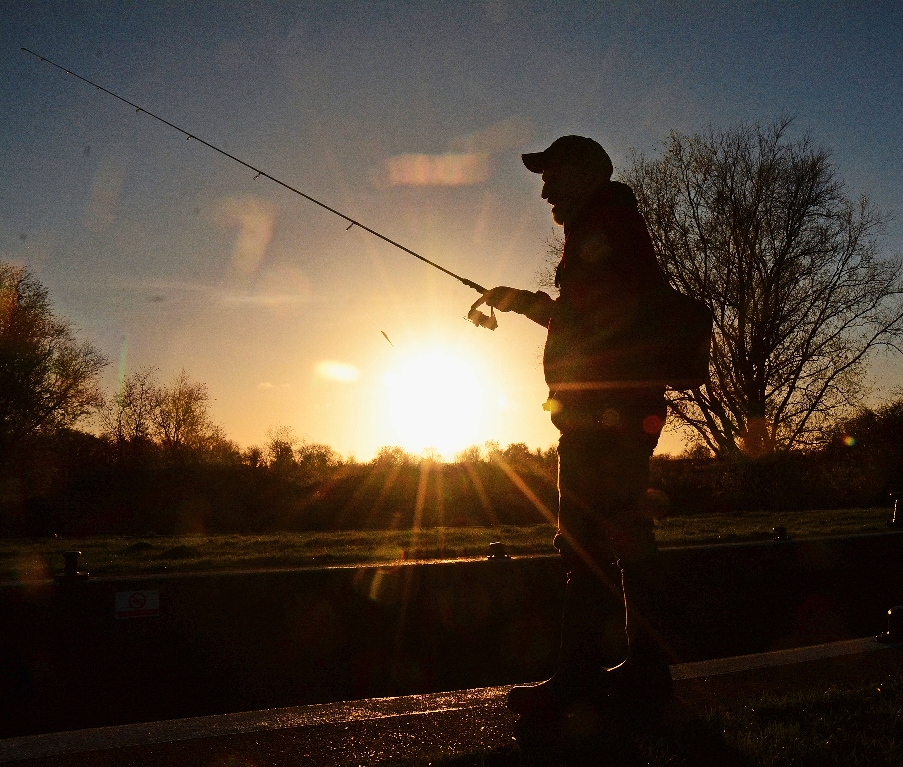


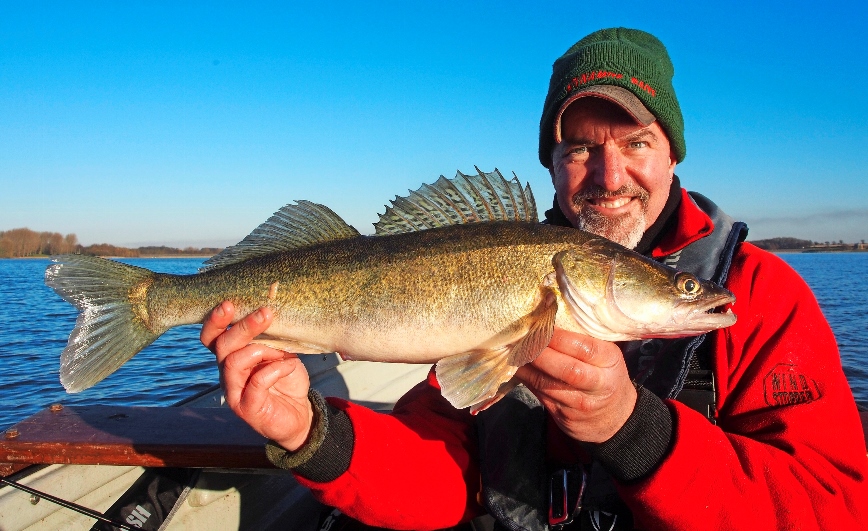
Light lure fishing has captured the imagination of UK anglers to an amazing degree in the past two years.
This has seen an influx of tackle rarely spotted in British tackle shops as most kit designed to fish this style had been the preserve of European, American and Japanese anglers. One such manufacturer of fine lure fishing tackle is Quantum. Offering a huge range of different rods to cover all styles of lure fishing, it was towards the lighter end that I looked to test.
The rod, a one-piece Quantum PT Accurist Spin is available in five different weights and lengths – from the shortest 1.98m (rated at a casting weight of 7g -21g) to the longest, two-piece 2.55m (CW 12g -74g) model. The 2.03m (CW 3g-12g) model I tested is a one-piece blank. This makes the rod more responsive when fishing lighter jig heads and hard baits, as there is no joining spigot to reduce the ‘telegraphing’ of the ‘working’ lure through the blank and into the angler’s hand. This is further enhanced by its new and improved build using lightweight HSX54 graphite construction.
The handle is made from EVA and features ergonomic grips on both the reel handle and butt section. Weighing only 95g (just over 3oz) it is perfect for using all day without fatigue. All lure rods are rated between Very Fast through to Soft. This rating indicates the stiffness of the blank and how quickly it will recover after casting. Basically, the faster the rod, the less the tip shakes and wobbles after casting!
Very fast rods are inclined to feel a bit like ‘broom handles’ while soft rods are great for playing small fish, but lack the butt power for casting distances. I found the Quantum PT Accurist Spin to be Fast, and combined with the light Casting Weight rating of 3g-12g, makes this rod a bit of an all-rounder for fishing light lures.
To put the rod through its paces and to test its versatility, I decided to both drop shot on my local river Nene, before going to the other extreme, vertical jig fishing into depth of 70ft on the mighty Rutland Water, the biggest man-made lake in Europe. For drop shotting, the river was not in the greatest of trim, quite dirty and carrying an extra 2ft on its normal levels. This worked in my favour in some ways as I needed to use a drop shot weight of 12g to hold station in and around the river’s various features.
With a handful of small perch and one getting on for a pound, the rod coped admirably with the prevailing conditions. For part two, it was on to a boat on a bitterly cold Rutland Water. Faced with depths of over 100ft in some areas, it is often necessary to use jig heads from 30g up to 50g. But, as you are vertical jigging – dropping the lure off the rod tip, and not casting – a light, fast rod like the Quantum PT Accurist Spin is ideal for targeting massive shoals of 1lb-4lb zander.
The heavy jig heads enable you to keep bow in the braid to a minimum, so you are able to work the lure correctly and ‘keep in touch’ with the bait while bouncing it along the bottom. On a slow day, with a few missed bites, the best fish of the test was a 5lb 9oz zander, taken in around 70ft, a few yards off the pumping tower. It put up one hell of a scrap from such a depth, but was easily tamed.
VERDICT
I would class this rod as decribed ‘on the tin’. It is a lighTt spinning rod, a little heavy for pure drop shotting and notquite heavy enough for some of the larger soft plastics and hard lures. But, as a light, middle-ground rod, it is brilliant. Having a very ‘tippy’ action, but with plenty of grunt in the bottom end, it is a lure rod that will serve you admirably whether you’re targeting bigger perch, zander or up to double-figure pike. It’ll certainly be in the boat on my next Rutland trip!
Mark Parker
TECH SPEC
Length: 2.03m
Casting weight: 3g to 12g
One-piece blank
Weight: 95g
Multi-coloured CNC EVA handle
Hook-keeper ring
Sic Fuji guides
PRICE
RRP £129.95
Avid Curvex range
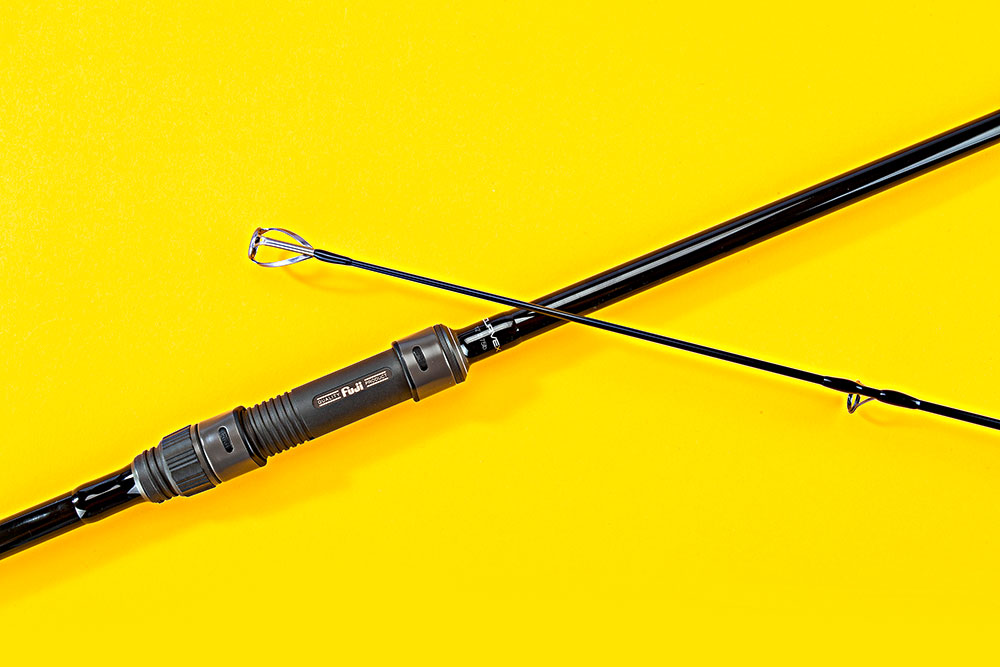
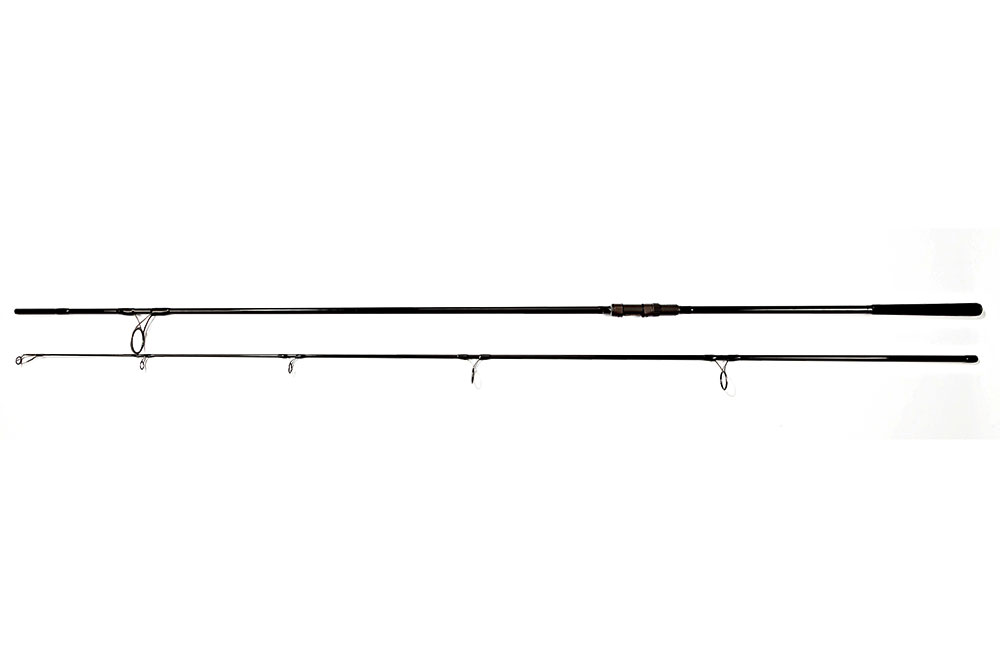
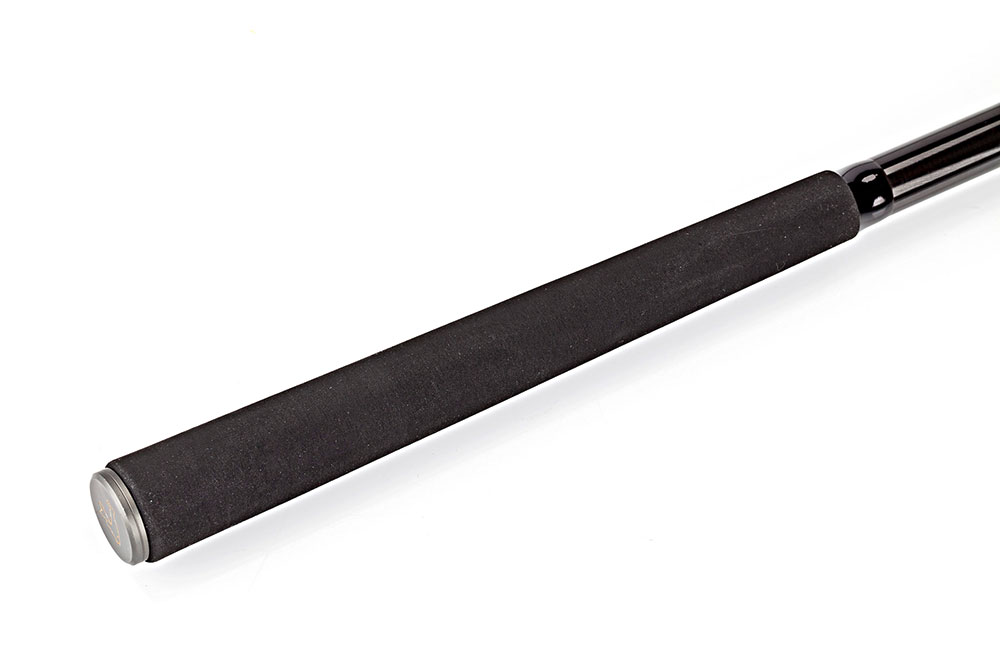
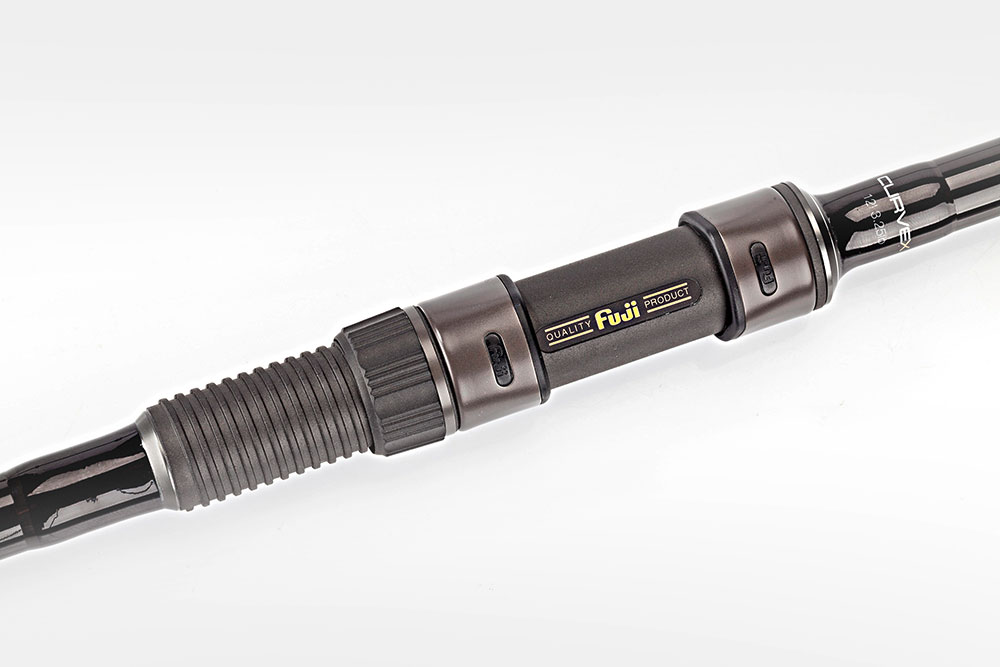
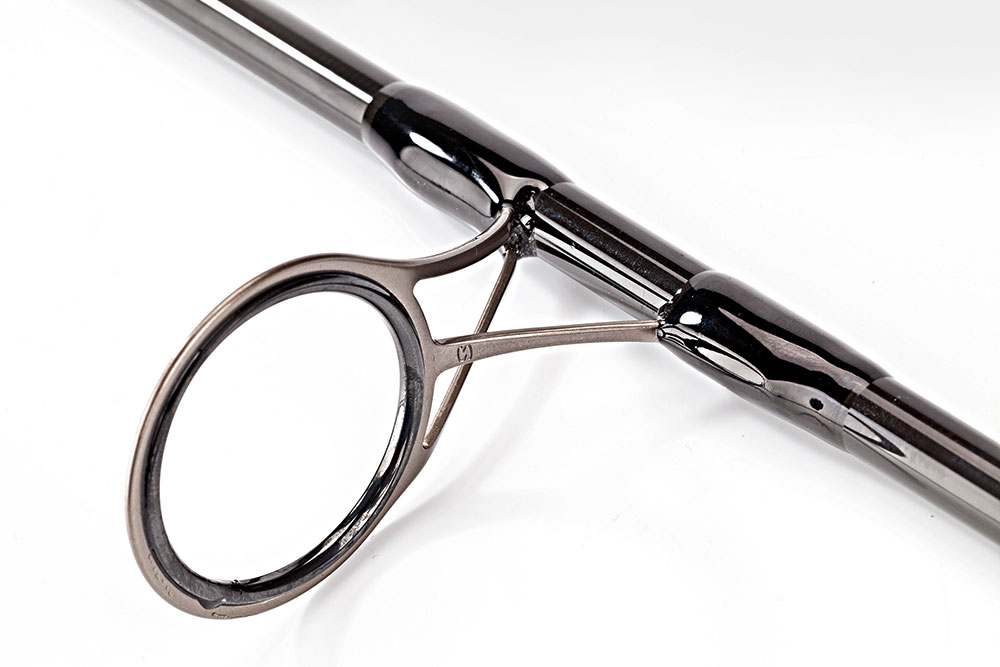
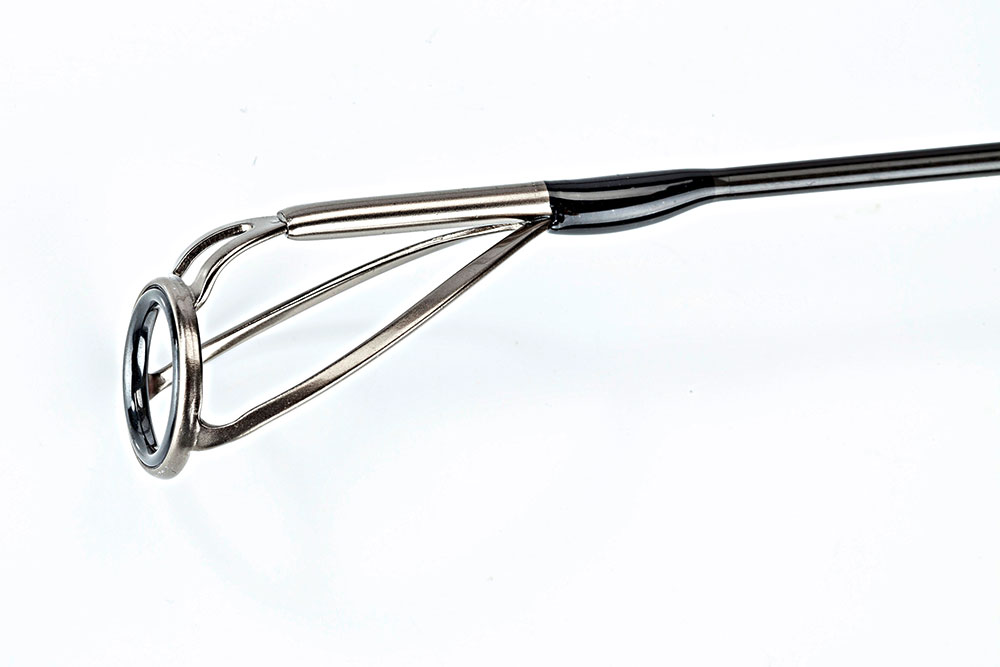
PAY AROUND
10ft, 3lb test curve £139.99
All others in the range £149.99
Big-carp brand Avid continues to come up with very innovative products, and these four new Curvex rods are bang on the mark, offering the modern carp angler something completely different from the norm.
Teaming an almost ‘old school’ through action with modern materials, these rods – coming in three lengths and four test curves – offer an intense fish-playing experience that allows the angler to feel every shake of the head.
The non-locking action doesn’t sit that well with casting to the horizon – but when you hook a big fish you can battle it with total confidence.
Even so, these two-piece rods have more than enough grunt for all but the largest of open waters.
It’s simply a matter of matching their 10ft, 12ft and 13ft lengths and 2.75lb, 3lb 3.25lb and 3.5lb test curves to your needs.
You can use them with smaller hooks, lighter hooklengths and thinner diameter reel lines without having to worry about hook pulls or painful partings of the way when your quarry makes a last-minute bolt for freedom.
There’s no doubt that finesse pays when the water cools and clears, and for that reason alone the Avid Curvex will appeal to anyone waking up to frost on their bivvy and grass crunching underfoot.
The ‘bend, and then bend some more’ action will also prove useful when big fish need to be played through weedbeds, or reeled in with washing lines of loose weed in tow.
Despite its best efforts you’ll be able to keep a big fish moving in the right direction without fear of breakage.
Other key features include original Fuji reel seats with Japanese shrink-wrapped handles, lightweight SiC guides throughout, anti-frap tip guides to prevent crack-offs, and 50mm enlarged butt guides on the 12ft and 13ft models.
All in all, these rods have the X Factor! It’s ‘four yesses’ from us!
Preston Competition Pro Super Light 9ft Feeder rod

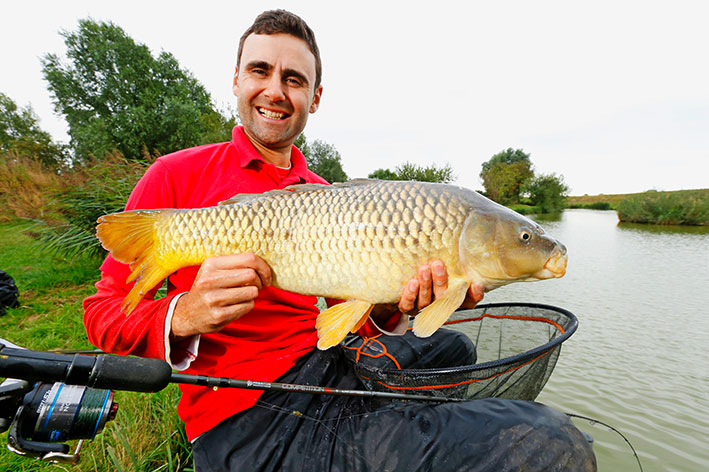
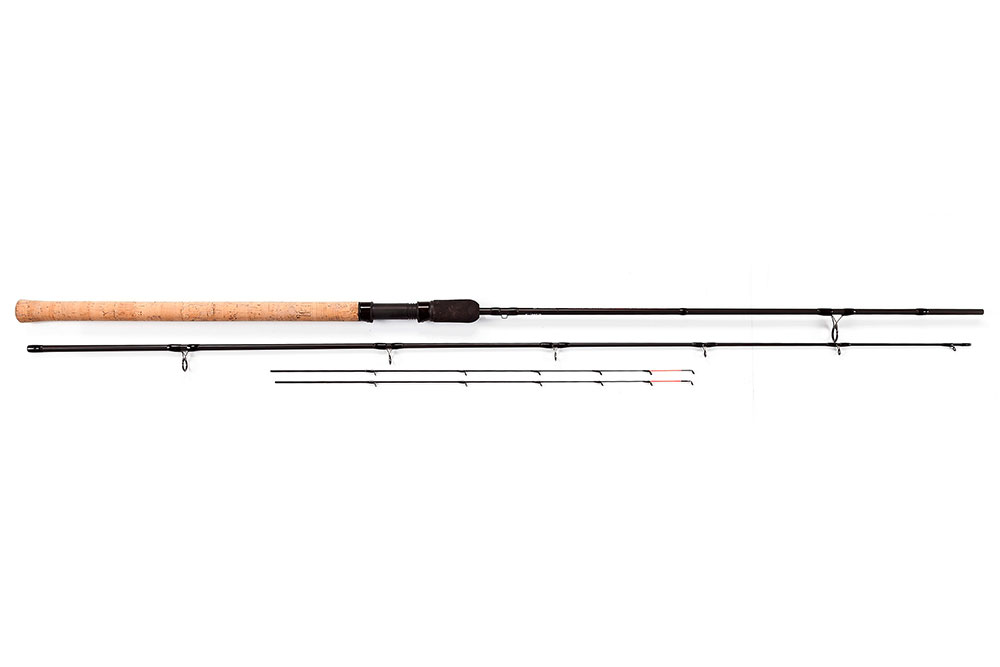
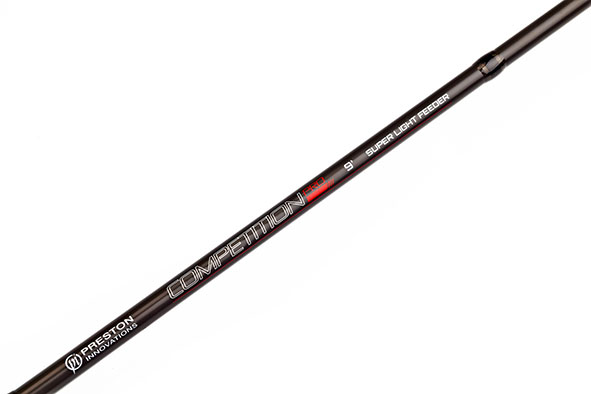


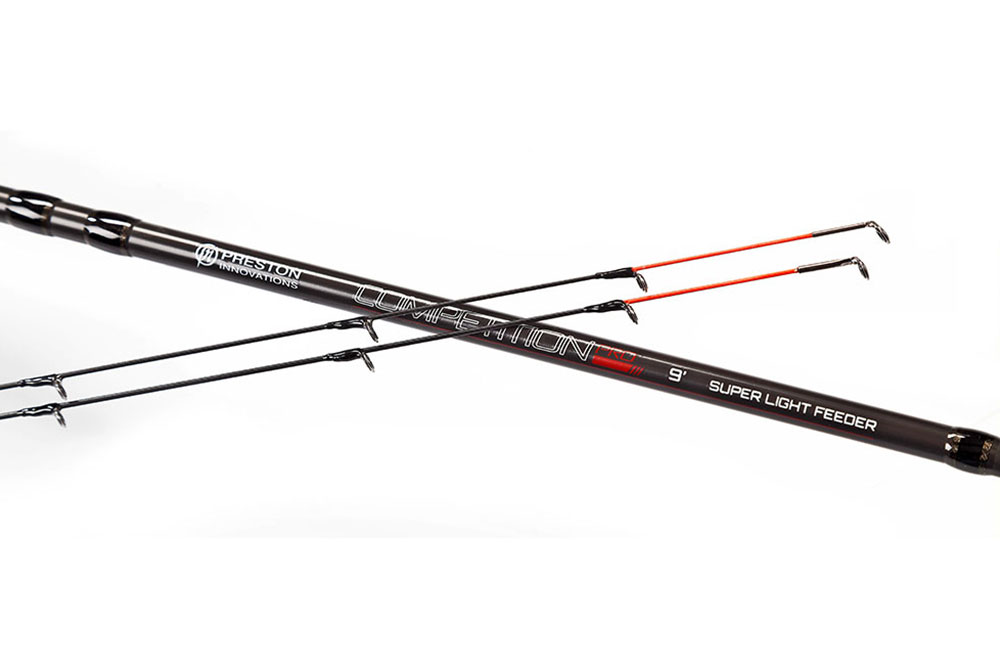
PAY AROUND
£89.99
There was a time when a ‘short’ rod was classed as 11ft maximum.
Nowadays a host of models in the 8ft, 9ft and 10ft class are available, including the Super Light 9ft Feeder from Preston Innovations. This is billed as a close-range tool for small feeders and bombs, and casts up to 30m.
It’s the baby of the Competition Pro range of feeder rods, which stretches right up to a heavy 13ft version. The Competition Pro is a definitely a series of all-round rods rather than out-and-out commercial tools, and although I could have taken it to a reservoir or a big lake and targeted small fish, it wouldn’t have been too much of a test. Instead it was thrown in at the deep end at Decoy Lakes’ ever-reliable Six Islands pool, which holds lots of carp in the 4lb-10lb bracket.
First, a note on the length. I absolutely love using a 9ft rod. Don’t get me wrong, it’s limited in terms of casting distance but for anything up to 35m or so it makes feeder fishing so effortless, especially with the hookbait tucked inside the frame of a Method or pellet version. A traditional open-end feeder with a long tail isn’t as aerodynamic, so a longer rod is needed to cast it properly.
With a 9ft rod, fish pop up under your feet for netting, as they do on a short F1-type top kit on a pole.
I clipped my line up for a short 16m chuck to the middle of the bowl at the car park end of the lake, where there is a sunken island. Believe it or not it’s quite difficult to discipline yourself to apply such a short cast – or it would be with a longer rod.
My 30g inline Preston Method couldn’t have been in the water much longer than 30 seconds when the 1oz tip I’d fitted pulled firmly round. A 5lb mirror carp was the culprit, and it was beaten in double-quick time. I quickly realised how much backbone and power this rod has, right through its faultless action. With several hooked carp I could feel the line grating through some submerged roots or vegetation on the bar, and I really had to give the fish some stick, standing up sometimes, to get them over it without breaking the hooklength.
Then I took the clip off and gave it a few good casts up the long sides of the lakes. This was surprisingly easy, helped by the large rod rings towards the base of the blank. I reckon you could punch a Method feeder 45m or 50m if you really went for it.
My final trick was at much, much closer range. I’d been throwing a few handfuls of pellets in the margins and a gentle underarm lob sent the feeder down there.
The rod was almost wrenched from my hands as I caught barbel and several more carp, including a double-figure common, which all made off towards a snaggy corner with an aerator. Despite a few hairy moments the Super Light Feeder took everything thrown at it, and smaller, softer rods like this mean fewer hook pulls too.
Nash KNX Carp Rod 3.5lb Test Curve
TECH SPEC
Test curves: Available in 2.75lb, 3lb and 3.5lb test curves. A 4.5lb Spod/Marker dual concept rod is also available
Handles: Full EVA Duplon handles on KNX carp rods, abbreviated shrink grips on KNX Spod/Marker rod
Guides: Exclusive Flexor guides for reduced blank distortion and greater power transmission, 50mm butt rings on 3lb, 3.5lb and 4.5lb Spod/Marker models
PAY AROUND
12ft 2.75lb £76.99
12ft 3lb £87.99
12ft 3.5lb £98.99
Spod and Marker 12ft 4.5lb £87.99
When carp rods look this good you’d expect two things of them – great performance and a hefty price tag. In the case of the KNX models, Nash has well and truly delivered one of these.
First let’s deal with the all-important looks. The completely non-reflective matt black blanks with matching gloss black decals may at first glance seem a tad dull, but they certainly give the rod an expensive classy look, guaranteed to draw admiring glances wherever you set them up.
When it comes to tasteful fittings and fancy furnishings, these KNX’s are of designer boutique standard. Their modern EVA and Duplon handles offer an easy, comfortable grip for casting and playing fish, and are finished with a laser-etched butt cap, complete with isotope slot.
A sultry black soft-touch rubber reel seat raises comfort to a whole new level – thanks to its clever skeletal design your thumb and forefinger can come into contact with the blank, giving improved ‘feel’ transmission from fish on the end.
Moving up the blank, you’ll find a line clip, then a 50mm butt guide on the 3lb and 3.5lb rods, followed by five more ideally-placed Flexor guides that reduce stress distortion during casting and give a seamless performance when playing a fish. Spigot alignment markings ensure the rod is always set up with the guides lined up straight. So this rod really does seems to be a class act, but what about its performance and price?
Price-wise it’s got to be a steal at £98.99 for the 3.5lb version on live test duty, £87.99 for the 3lb rod, and just £76.99 for the 2.75lb baby of the bunch.
With limited time available, the live test was geared towards what the 12ft, 3.5lb test curve blank is capable of.
I can happily report that it was more than capable of casting 3oz leads teamed with solid PVA bags and mesh sticks. Admittedly it isn’t an out-and-out casting tool, so if you’re thinking ‘unbridled power’ you may be slightly disappointed. The carbon composite blank doesn’t generate uite enough energy from its butt section, and loads the casting weight a little bit further down the tip than a horizon-buster of a rod.
That said, and for the money, Nash KNX rods are perfect for small to medium-sized carp waters where casts of up to 75 yards using solid PVA bag and mesh sticks are needed.
The progressive action makes it far less prone to hook-pulls than the ‘broom handle’ 3.5lb rods of yesteryear, which had no fish-playing action and scant feel. The KNX will handle fish from low doubles upwards, and make it a joy to catch them.
Completing the KNX collection is a Spod/Marker rod with a powerful 4.5lb test curve – so you can have a matching set if you feel like pushing the boat out.
VERDICT
Nash KNX carp rods offer the highest spec available in their modest price bracket. With on-trend looks and custom-built qualities, these multi-talented tools are ideal for venues – and carp – of all sizes.
If you’re just getting serious about your carping, and are looking for a set of good rods that won’t break the bank, I would take a long serious look at these.
Shakespeare Superteam Match 13ft rod
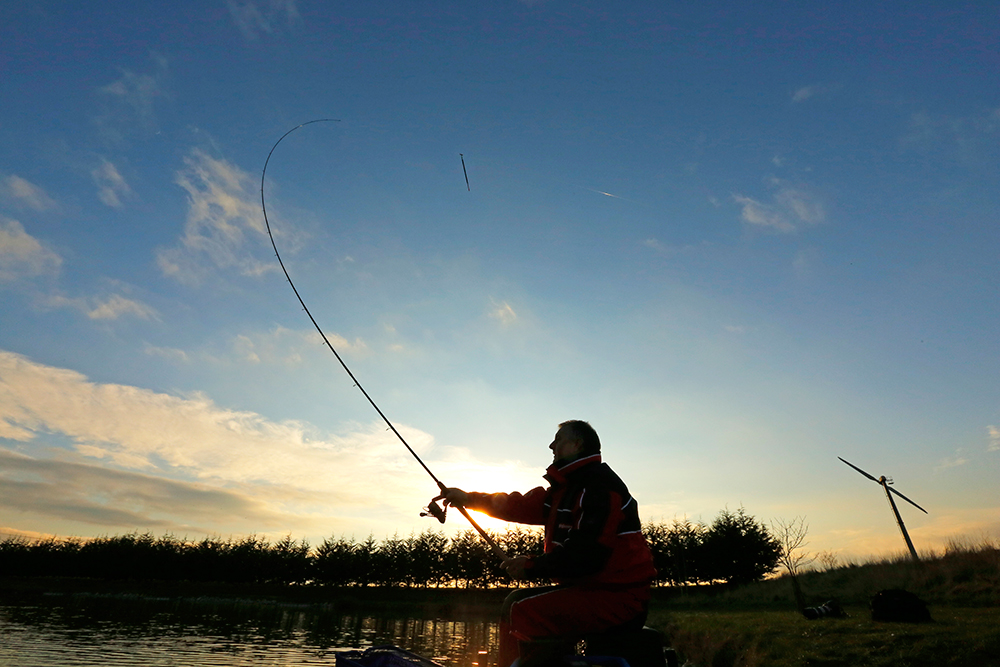
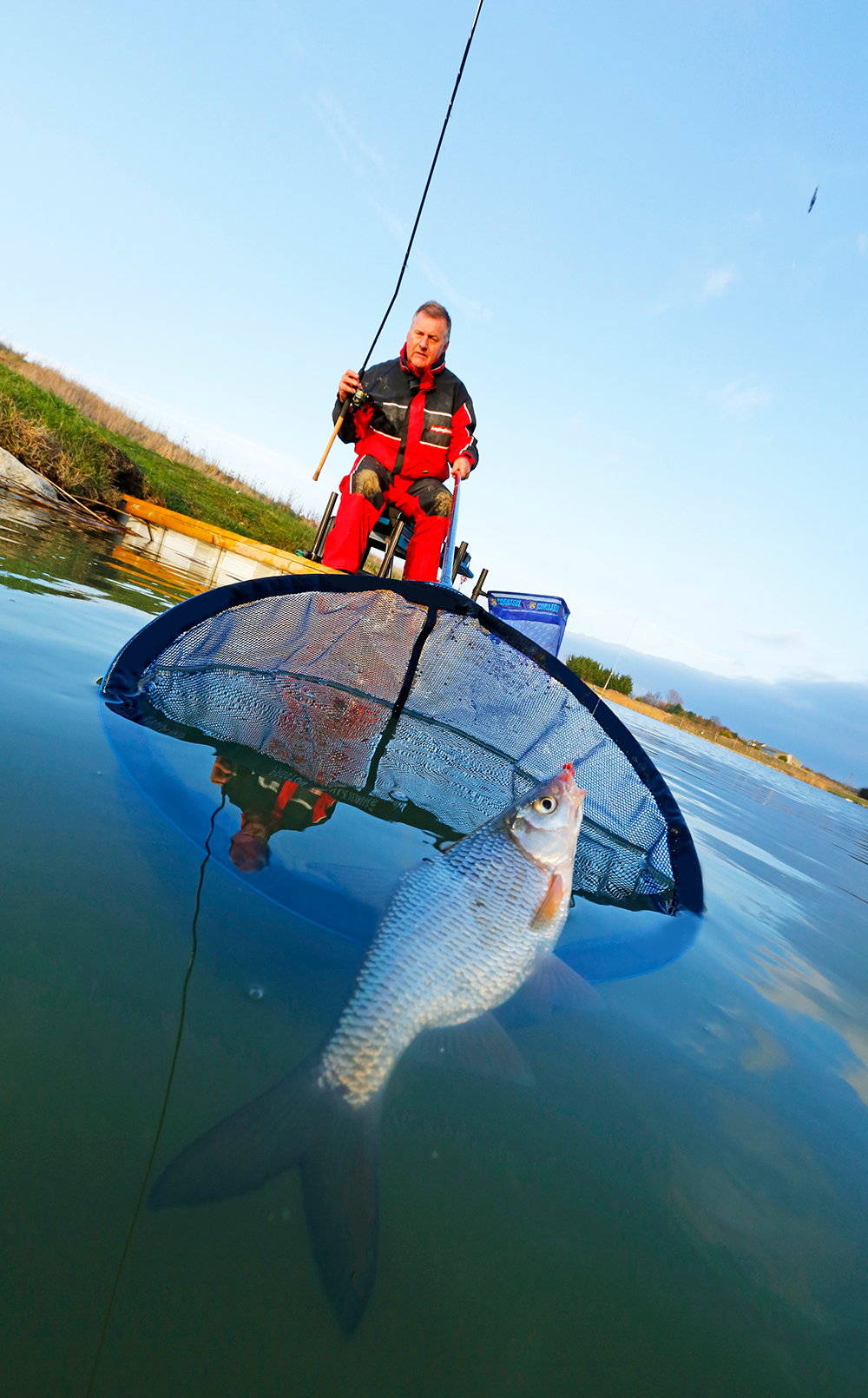
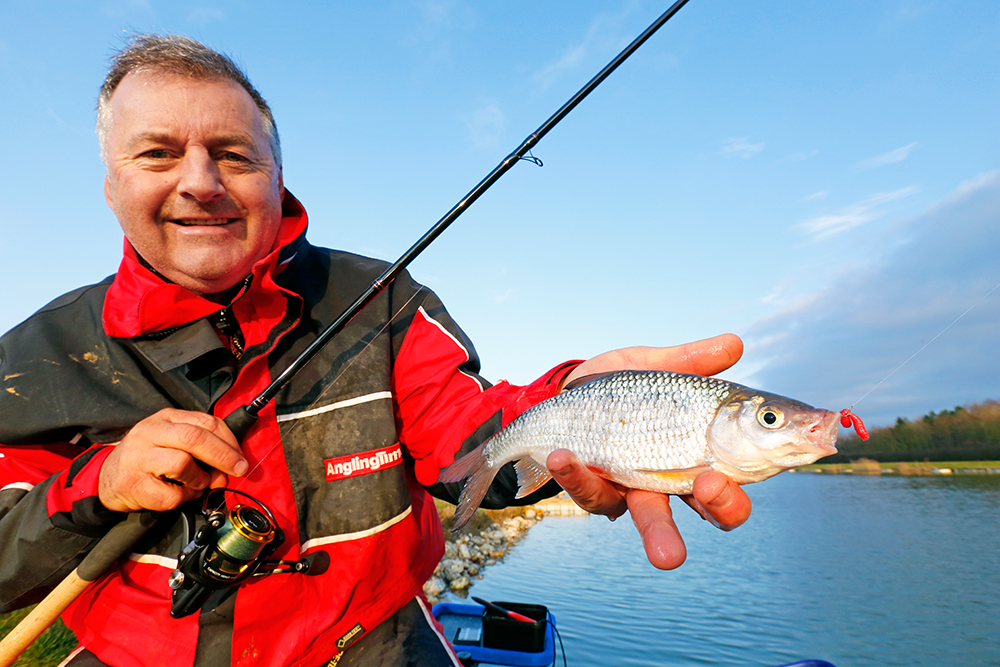
TECH SPEC
Length: 13ft
Power rating: 6lb
Pieces: 3
Handle: Cork/EVA
Rings: Zirconium
Extras: Side keeper ring
PAY AROUND
£89.99
You could do worse than use the Redditch tackle giant’s products down the years as a means of charting the development of the modern match fishing rod in terms of materials, furnishings and specifications.
A potted history of Shakespeare notables would show the fibreglass Match International as a rod ahead of its time. This was followed by the excellent, if rather expensive, President which I believe was the first carbon fibre rod to be built with a spliced-in tip.
Then we had the superb Mach 2 Boron which held centre stage with matchmen for many seasons, but was eventually superceded by the Mach 3 carbon. Since then we have been blessed with the firm’s high-modulus carbon Superteam model, launched in 2014.
Shakespeare did, of course, introduce many other match rods but those listed above were widely recognised as being as good as it got back in the day. Remember, it wasn’t all that long ago that match fishing was all about using a waggler or stick float to catch winning nets of roach, chub, dace, perch or bream, the tool of choice being a 13ft, three-piece.
The finesse to deftly flick a small waggler across a canal, cleanly pick up line from the surface when long trotting and cast bodied wagglers or sliders into deeper water on rivers and lakes, are qualities we expect of any good match rod.
That brings me nicely on to Shakespeare’s Superteam 13ft match rod which really is a jack of all trades and will take all these tasks in its stride. Yes, this rod was first introduced a few years back, but that doesn’t make it in the least bit tired or dated. It remains to this day one of the best all-round match-style float rods that few others can hold a candle to.
The three-piece pencil slim carbon blank is nice and light in the hand, making it easy to hold for long spells, and a requirement of any good river rod. Worthy of note are its zirconium oxide guides that enable almost friction-free line travel, very useful when trotting a river at the pace of its current.
Its fast, progressive action doesn’t lock up under stress, so when you hook into a really big fish the blank will absorb and keep absorbing its runs and lunges with no fear of the line snapping. At the same time it has the backbone to boss fish away from snags.
Live testing the rod was interesting, as I already had some idea about the Superteam’s performance from an earlier Angling Times review. This time, rather than take it to a carp puddle or river, I thought I would test the blank’s sharpness and line pick-up qualities on a deep venue I knew held some big roach and decent ide.
Waggler tackle with small hooks and maggots, coupled with a nagging easterly side wind, wasn’t perhaps the ideal mix for a decent day’s fishing. But I needn’t have worried – Shakespeare’s finest 13ft of carbon cast a hefty three-swan insert waggler with ease and unerring accuracy.
With the float set at 12ft deep, line pick-up speed was central to hitting bites and the rod didn’t disappoint, connecting time and time again with the most tentative of enquiries.
As the fish responded to the feed they started coming up in the water, and bites became lightning-fast.
Now the line needed to be whipped from the surface at a rate of knots, and yet again the rod performed impeccably. Not merely a jack of all trades but a master of them all.
VERDICT
Another pure class floatfishing rod from the Shakespeare stable and perfect for silverfish, the Superteam 13ft is tactically flexible and ultra-reliable. Use it with confidence, however light the terminal tackle. Its anti-locking nature and progressive action allows it to cope with sizeable fish, something that cannot be said of many old-school float rods.
Free Spirit CTX 10ft carp waggler rod
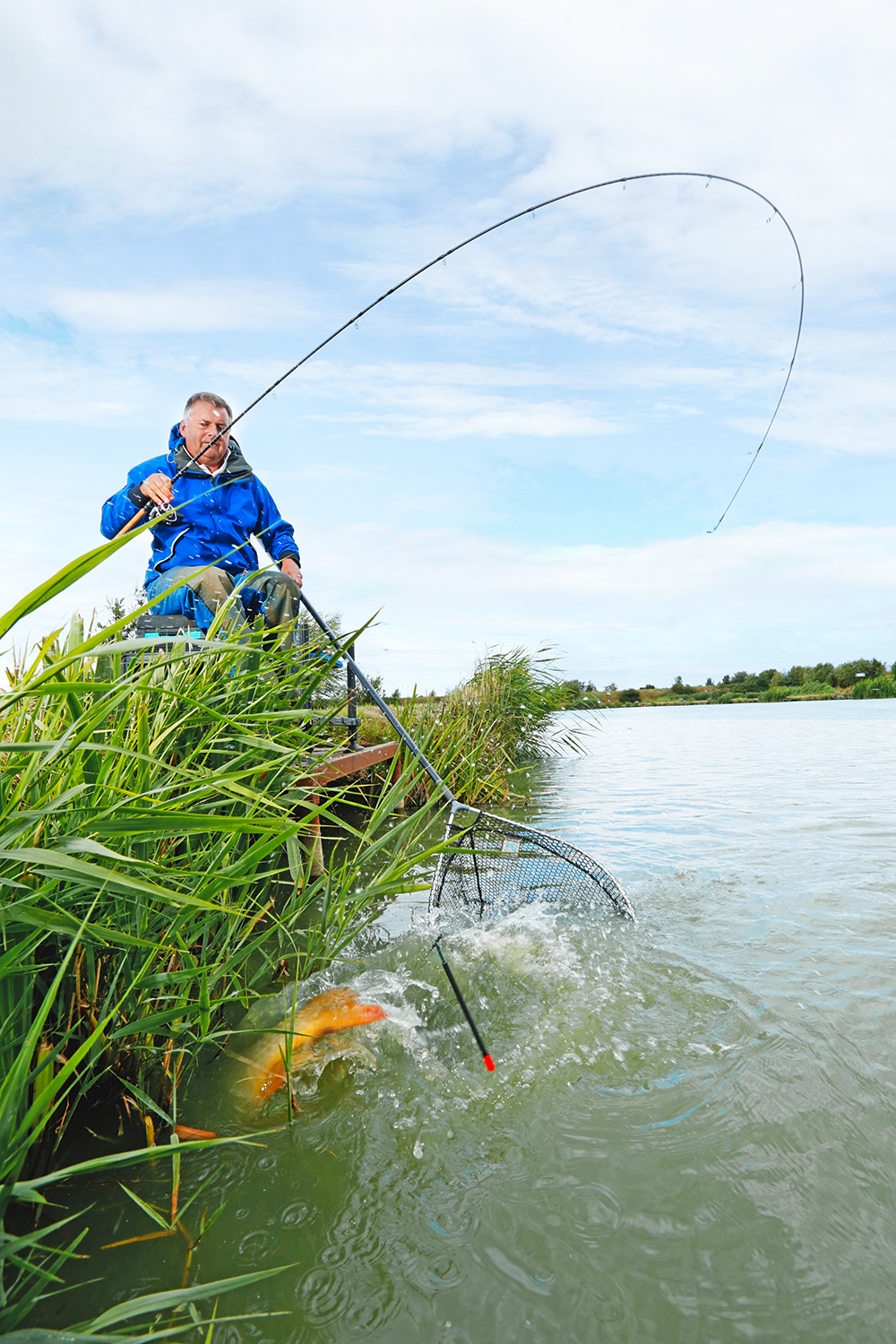
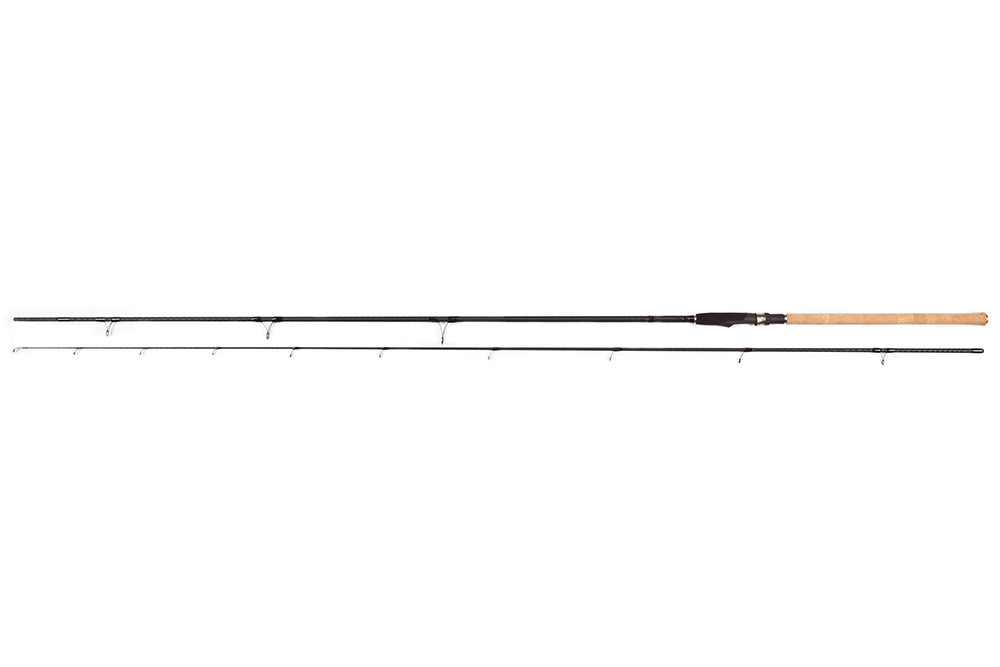

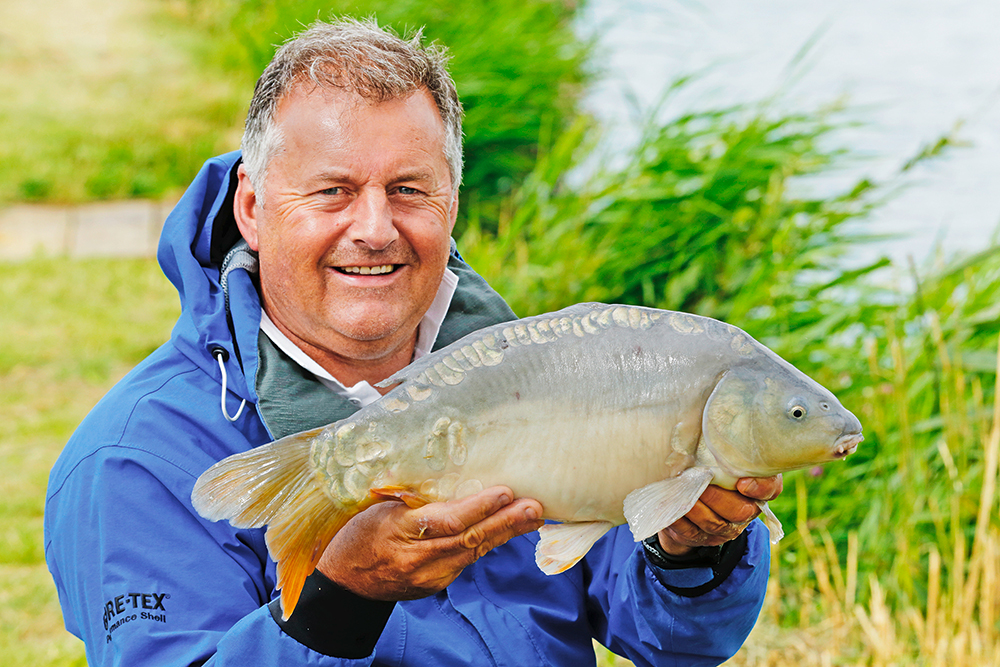
PAY AROUND
£94.99
On September 5, five Carp Waggler, five Carp Feeder and two Multi-Feeder rods from Free Spirit will hit the tackle shops.
All use the company’s tried and tested CTX specification, which has proved so successful in its carp and barbel rods.
The 40 tonne carbon blanks’ Bi-Axis weave makes them exceptionally light and immensely strong, and their brilliant paint and lacquer-free Perdurable finish is impossible to mark.
Other key features include reduced length handles (although the stepped-up SU Waggler and BW Feeder rods retain long handles for distance casting). The action of all the new rods gives an even build-up of power from tip down to butt, more than enough to stop powerful fish on light gear without the blank bottoming out.
Fast forward to the Oaks Strip at Decoy Lakes, near Peterborough. An early numbered peg at the top end of the Oaks, with the wind off my back, would in all likelihood prove to be a good testing ground for the CTX 10ft Carp Waggler rod.
Fitting the two sections of the rod together, it immediately struck me how slim and light it is. It doesn’t feel or look like an ordinary pellet wag chucker, either, being almost reminiscent of the featherweight old-school rods we used for squatt fishing on the Grand Union Canal.
There’s enough whip in it to be used with floats weighing as little as 3AAA. But the elfin 10ft blank still has more than enough poke to propel a waggler headlong into the strongest of winds.
This I discovered when, mesmerised by its all-round casting, fish playing and handling, I walked the rod round to the other side of the lake where my work colleague Ben Fisk was
live-testing a new margin pole.
Ben, one of the best young match anglers in the UK, is normally a man of very few words. But after just a few casts, and a couple of lucky early mug fish, he turned to me and asked whether he could ‘borrow’ the rod for his forthcoming weekend matches.
That alone should tell you how good the CTX 10ft Carp Waggler is.
VERDICT
Well, occasionally you just don’t see something coming. The comfort of its handling, the tip speed, faultless non-locking parabolic action, classy guides and woven carbon blank make this by far the best 10ft waggler rod we have seen, and at a price that won’t cause credit card meltdown. Go to your nearest tackle shop and have a look at one if you think I’m kidding.
Avid Traction carp rods
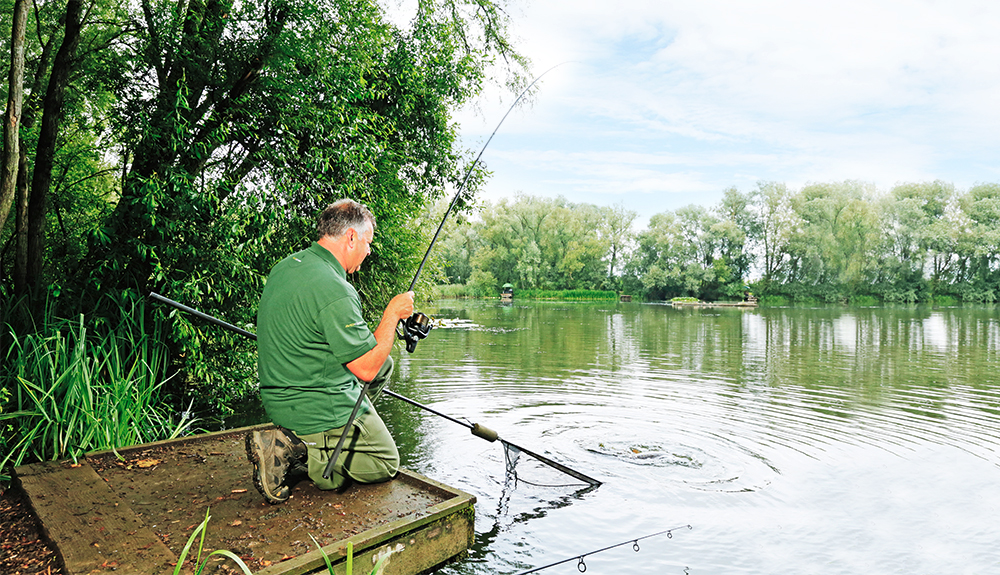
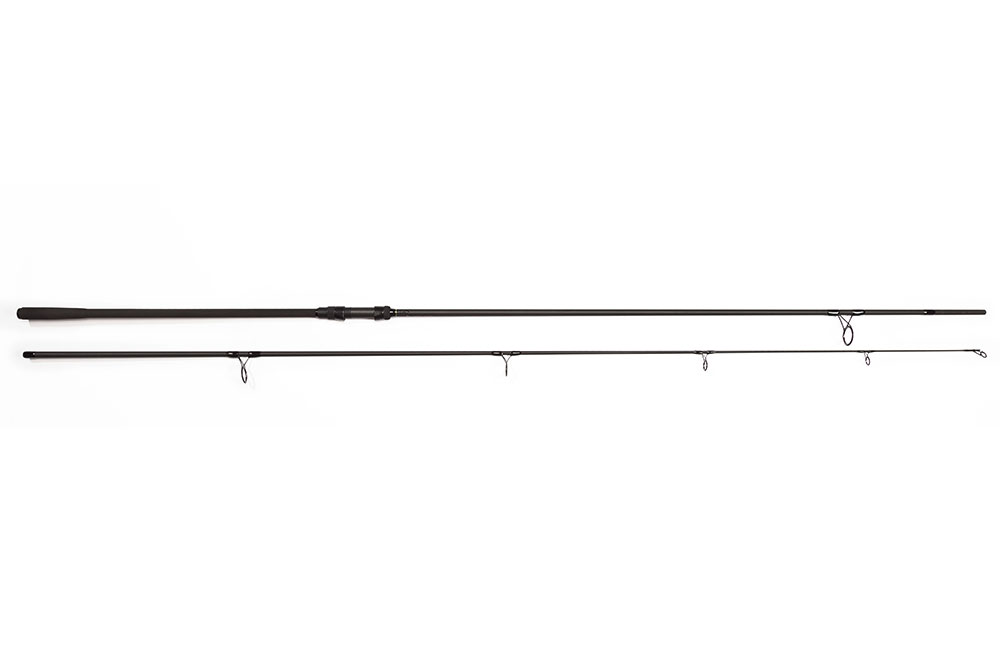
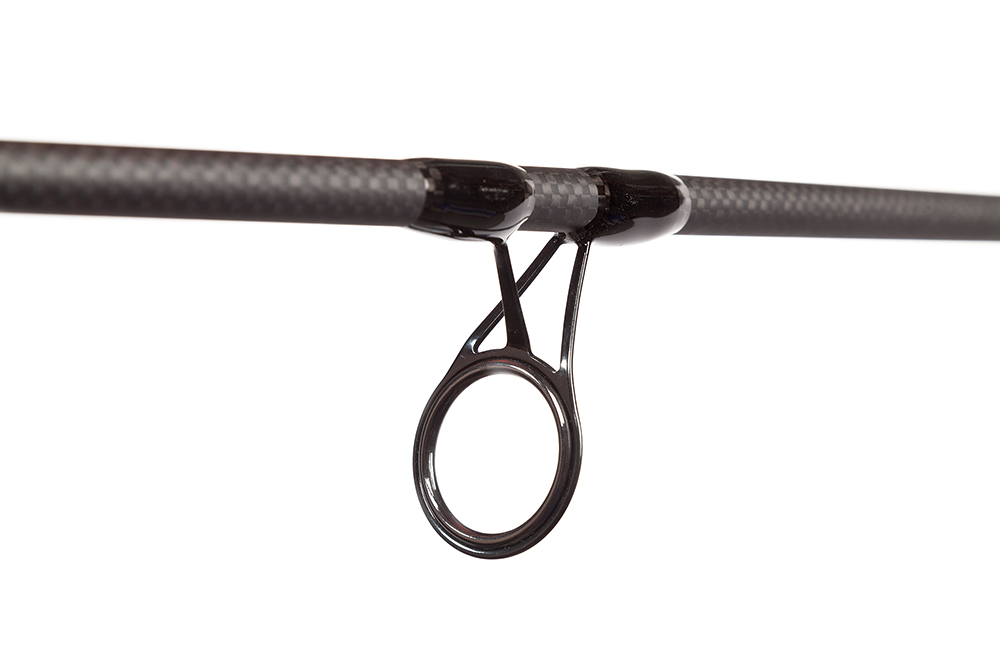
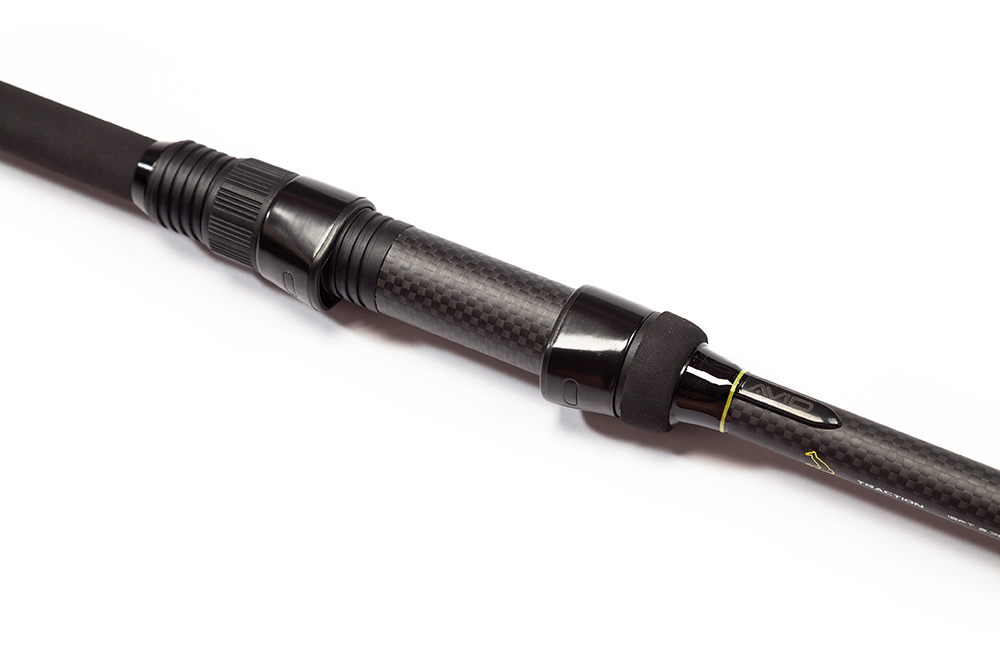
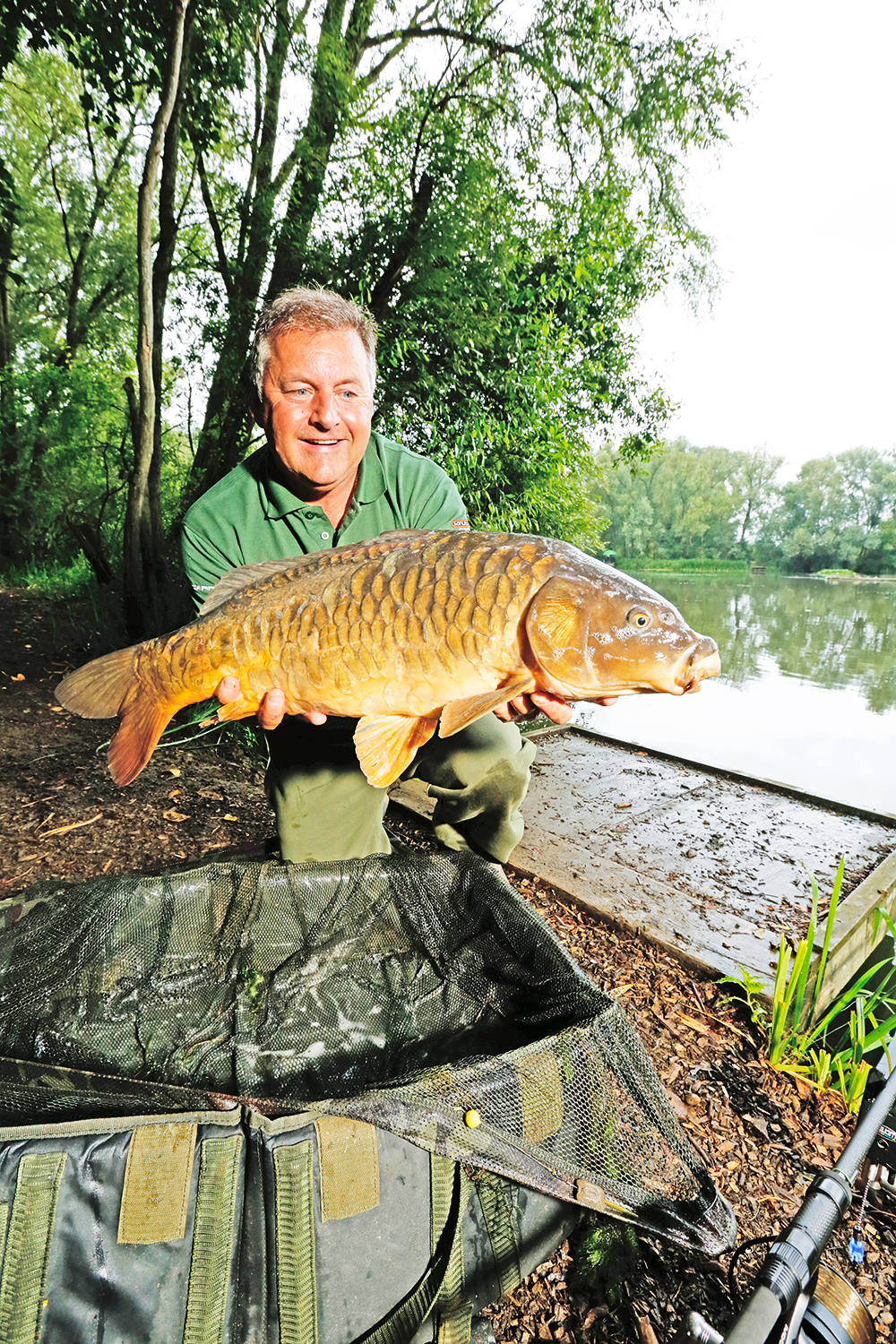
PAY AROUND
£79.99
Since their introduction a little over nine months ago, Avid’s Traction Carp rods have become the benchmark by which all sub-£100 models are judged.
Built from Reactive carbon fibre wrapped in a matt-finished 3K weave, each 12ft blank offers a unique take on the traditional parabolic action beloved of carpers. A slow build-up of power cushions the runs and lunges of hard-fighting fish, offering greater control when it really matters.
It’s just the sort of action needed for a modern day big-carp rod that multi-tasks.
The original Traction models carried test curves of 3lb, 3.25lb and 3.5lb, covering everything from solid PVA bag and stick work to middle to long-range Method feeder and straight lead work.
I more than proved the point when live testing a pair of the 3lb models last November at a cold and rather uninviting-looking Boddington Reservoir where a whack of 90-plus yards with a 3oz pellet-laden Method feeder was needed to reach its denizens.
You might think that most of the general heavy-duty casting work would be taken care of by the 3lb, 3.25lb and 3.5lb models. Avid’s development team could indeed have been forgiven for lying back on their super-comfy Benchmark bedchairs and feeling a bit smug.
But not a bit of it – enter the new 2.25lb and 2.75lb test curve blanks. Both rods boast the same Reactive carbon and 3K weave as the originals, but they have a slightly softer parabolic action suiting them to smaller waters, more modest casting distances and surface and zig rig tactics.
To test these attributes, what was needed was a medium-sized lake with a healthy stock of big, snippy fish that could be tempted on a wide range of tactics.
Northamptonshire’s day-ticket Willowbrook Lake, jam-packed with handsome fish to almost 30lb, fits the bill. It’s a superb daylight venue, especially if you’re after wetting the unhooking mat without waiting all day for a run.
First up was the new Traction 2.75lb rod, rigged with a 1.5oz inline Avid lead and solid PVA bag full of micro pellets.
The blank took little persuasion to launch its payload to the centre of the lake, close to a man-made floating island. It could easily have been burdened with a heavier lead and tasked with a far longer cast.
The slightly softer 2.25lb model was kitted out with a zig rig and 2oz lead, cast close to one of the numerous lily beds. It handled the weight easily enough, but it’s definitely not a rod with lots of clout. For all zig, surface and margin work, though, it’s ideal.
I didn’t have to wait long for the alarm to sound, as what felt like a decent fish ploughed straight through two weedbeds before I even had a chance to pick up the rod and tighten down the clutch.
Summer carp in shallow water can be tricky enough to cope with on their own, without having half a hundredweight of weed festooned along the line like so much washing. With the 2.75lb blank, it seemed all would be lost.
But deep in the belly of the blank was a core of steely strength with enough pulling power to drag the beast from its lair. The fish, having gone underneath the weed and out the other side, was still snarky about being hooked, but eventually both carp and weed came safely over the net cord.
What more can you say, other than that these rods are fabulous? I also managed two on zig rigs on the lighter model, and would happily add both to my holdall.
VERDICT
Two more sure-fire winners from the Avid stable. The addition of lighter 2.25lb and 2.75lb test curve rods further enhances the comprehensive Traction Carp range. Ideal for smaller waters, but still more than capable of handling very big fish, the heavier rod is perfect for small bags, Method feeders and zigs.
Its lighter compatriot would make an awesome shallow water zig, surface and margin tool.
Browning Commercial King2 Medium Pellet Waggler rod
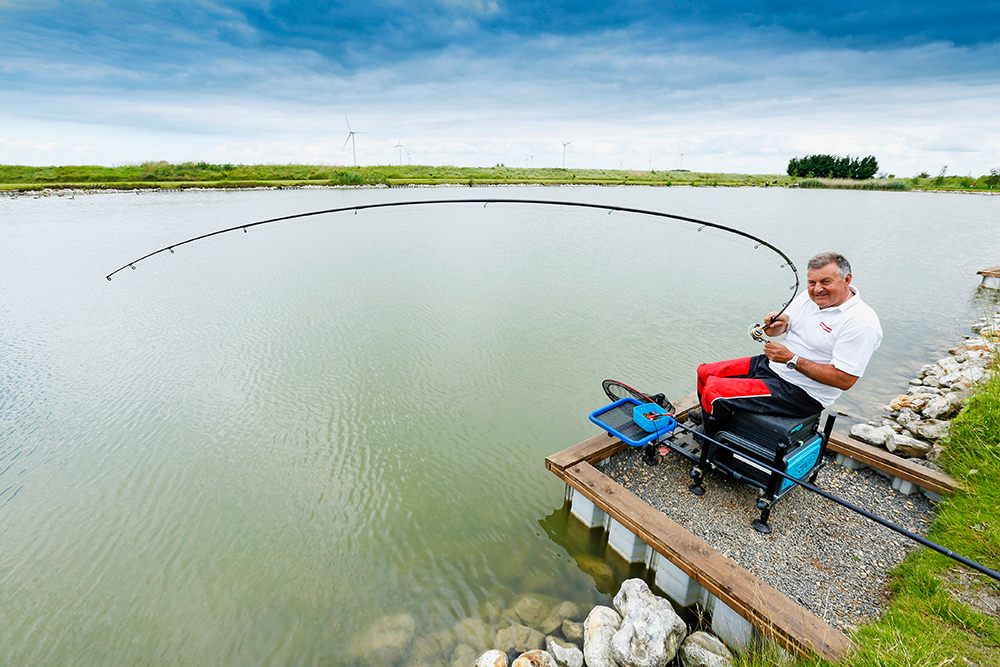
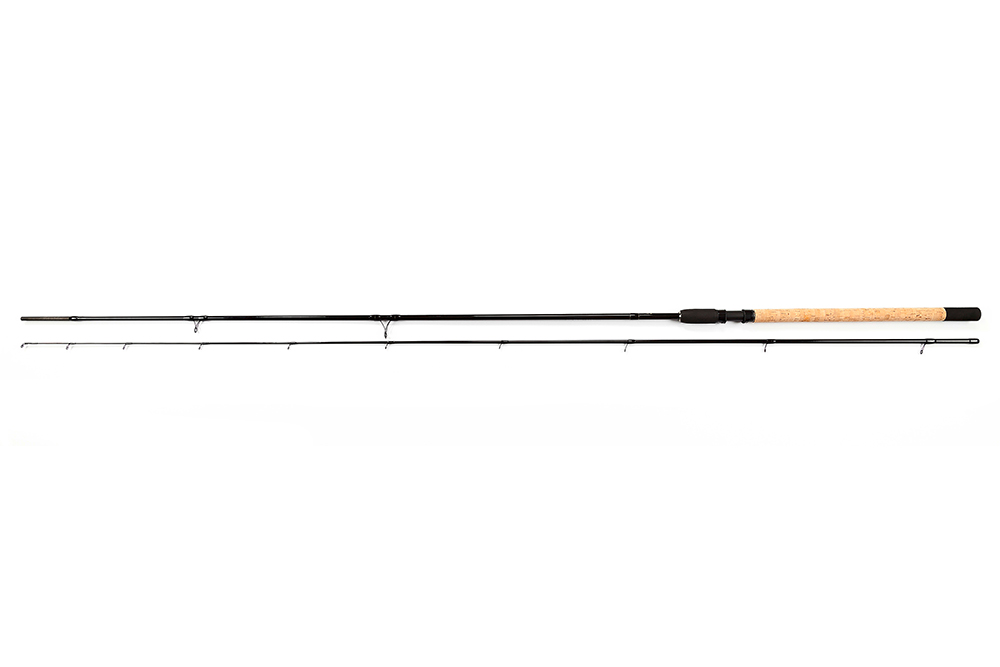
QUICK FIX
Top section: The top section of the rod has
a quick tip action with a fast recovery rate. This allows you to make longer and smoother casts.
Fittings: High-quality line guides are used throughout, producing super-slick casts no matter how great the diameter of your line.
Blanks: Made from ultra-slim high-modulus carbon blanks, they have two equal lengths so that they are ideal for carrying ready made up.
Action: The rods have a perfect parabolic non-locking action which is ideally suited to commercial fishery carp of any size.
Handle: The new Commercial King2 rods
are designed with shorter cork handles so that they can be more easily manoeuvred around the angler’s body.
PAY AROUND
£69.95
Browning has revamped its range of Commercial King rods.
The latest models retain many of the build characteristics of the originals – slim carbon blanks, two equal-length sections and a responsive, progressive action.
However, Browning has further refined its best-selling UK range with improved cosmetics, beefed-up casting prowess and a tweak to provide a little more power through the mid-sections.
All this has been accomplished without Browning significantly hiking up its prices, which something to be applauded.
So, with the summer sun in full water-warming mode and carp cruising about all over the surface of nearly every lake I have visited in the past two weeks, it made perfect sense to take a closer look at Browning’s latest Commercial King2 Pellet Waggler rods.
These 11-footers come in Medium and Power versions, the latter boasting around 15 per cent more stiffness and power for situations involving bigger fish, or casting heavier floats up to 30g.
My chosen test venue, The Pool at Fields End Fishery in Cambridgeshire, is noted for its mixed stocks, so I chose the Medium model with a maximum casting weight of 20g. This is ideally suited to lighter floats, hooks and lines.
Assembling the rod, it’s immediately apparent that this is quality kit. At only 175g, it’s nicely balanced, with a super-quick tip action and fast recovery. That means it doesn’t wobble around much, making long, smooth casts easy to achieve.
My float choice was the small flighted John Bonney model that comes free on the front of Angling Times this week. It flew across the Pool to a range of 25m with no effort. The slightly reduced handle length made feeding with a catapult equally effortless, and that made very short shrift of what can otherwise be a rather tiresome ‘feed and cast’ routine.
Feeding little more than half-a-dozen 6mm pellets every 20 seconds or so, it wasn’t long before dark shapes were coming in to feed as soon as the pellets hit the water. But, as often happens on a well-fished venue, as soon as the float splashed down, they high-tailed it out of the swim.
The answer to this fishy conundrum is to feed twice, immediately before and after casting. You will also need to feather the line, so that the float lands with a gentle kiss on the surface. Get it right, bites will be savage. You now need to get them out of the killing zone as quickly and quietly as possible, by keeping the rod low, simultaneously reeling and pulling back.
For this you need full confidence in your rod, and reel for that matter, keeping the fish moving without pulling the hook, breaking the line or having the fish charge back through the feeding shoal. Basically you are pushing your kit to it limits, and it needs to respond and perform in equal measure.
This latest Commercial King2 Medium Pellet Waggler rod does exactly that. The added bit of muscle Browning has added kicks in as the blank approaches full parabolic compression, but its non-locking action provides enough of a safety factor for you to be able to dish it out without fearing the worst.
I was also impressed with the rod’s ability to deal with fish other than carp. During the live test some pretty hefty ide decided to have a go. These are not exactly cage fighters, but can be welcome weight builders in matches.
Their lolloping ‘fall-over’ swimming action means they are effectively dragged towards the net – hook-pulls happen all too often when using carp-style pellet waggler tactics. But not with this rod. It handled everything from near-double-figure carp, through to heavyweight ide and big roach, with aristocratic disdain.
VERDICT
I really liked the original Browning Commercial King rods, rating them right up there with many of the best models then available.
These latest rods look, feel and perform with every bit as much style, but with a little more bite.
Improvements to the cosmetics and furnishings give them an expensive top-end look which belies their very sensible price tags.
Mark Sawyer
JW Young Specimen Barbel Multi Tip Travel rod
PAY AROUND
£99.99
This is a handy little travel rod for anyone thinking about sneaking in a spot of barbel fishing when they’re on holiday. Ideal to tuck away in the boot of the car, the five-sectioned 12ft carbon blank has a powerful through action, able to deal with the largest of fish.
It comes with push-in quivertips of 2.5oz, 2oz and 1.5oz, and an Avon-style tip that could be used for heavy floatfishing. In a tough go-anywhere tube, other key features include high-quality lined guides, keeper ring, and a full cork handle with forefinger grip.
Colmic Scrape Xtreme Next Adventure 35g Feeder rod

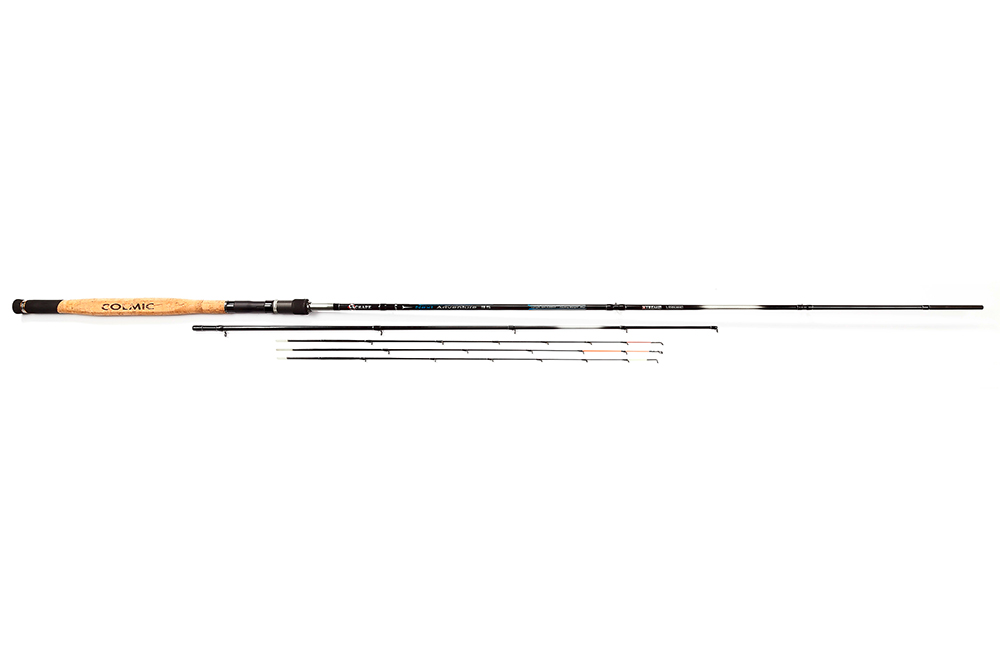
PAY AROUND
£77.99
Italian brand Colmic has been around the UK match scene for many years, with products such as Colmic Jolly pole floats..
Its nickelled Nuclear 501 pattern is the forerunner to many commercial carp hook designs, and it’s fair to say that Colmic poles – and rods, for that matter – have proved very popular.
It’s always going to be tricky for a European company to gain a really strong foothold, though – think Trabucco and Tubertini.
However, at this year’s Big One show Colmic revealed several very impressive new poles, seatboxes and rods for commercial fisheries.
One of the outstanding new rod concepts at the show was Colmic’s three-rod 9ft 25g, 10ft 35g and 11ft 45g Scrape Feeder Xtreme Next Adventure series. All three of the two-piece blanks have a typical fast parabolic action, marrying a forgiving tip section to a mid-section with plenty of backbone, allowing fish to be played quickly to the net without the risk of hook-pulls or snapped lines.
Colmic has built its three Adventure rods with a taper unique to each in respect of casting distance and feeder weight. The shorter the rod, the faster the taper – the longer the rod, the stronger its lever, which translates into casting power and ability to bring fish quickly to the net. All three models are said to be ideal for use with cage, pellet, Method and block-end feeders, as well as straight lead tactics.
The model on live test duty, the mid-range 10ft 35g rod, should be well suited to most short to mid-distance feeder work on a normal commercial fishery.
The proving ground for the theory was Decoy’s fish-packed Lou’s lake, a horseshoe-shaped water that responds particularly well to far-bank feeder tactics. Accurate casts of around 35m are needed to get the best from it.
Starting the session using a lightweight 15g flatbed Method feeder, the sporty Italian blank cast straight as a die time after time, and despite early reservations about its short and rather delicate looking quivertip carrier section, the silver-etched black blank really did produce an impressively fast parabolic action. Carp from 2lb-5lb were beaten in double-quick time.
The rod comes with three push-in fibreglass quivertips of 1/2oz, 1oz and 1.5oz, and the featherweight blank features two double-leg lined guides on its butt section, with another five single-leg lined guides perfectly placed along its carrier section to emphasise the fast taper action.
Suited to mainlines up to 8lb and hooklengths down to around 0.12mm, it’s lots of fun to use, mainly because it’s nigh impossible to lock up.
As an all-round commercial feeder rod it not only looks different from the norm, but it performs in a refreshingly different way from your average bog-standard commercial feeder rod… grazie Colmic!
VERDICT
Don’t let its name or dual colour scheme put you off – Colmic’s Scrape Xtreme Next Adventure 35g Feeder rod is quite something! Perfect for short to medium casting ranges, the blank lands substantially big fish in double-quick time, even on light gear.
If you visit a commercial fishery where the fish’s mouths are a bit messy and prone to hook-pulls, you should definitely have a look at this rod soon.
Preston Innovations Carbonactive Mini 11ft 6ins Method rod
PAY AROUND
£169.99
This super rod from Preston Innovations is designed for medium to long-range feeder fishing.
The two-piece carbon blank has power aplenty to launch a fully loaded Method feeder upwards of 60m.
But it’s not all brawn – the blank still has enough softness to absorb powerful lunges from big fish, doing away with hook-pulls at the net.
The rod comes with two fast-taper quivertips that give instant bite registration, and super-positive line pick-up speed even at extreme distances.
Tri-Cast Trilogy Commercial Pond Wand

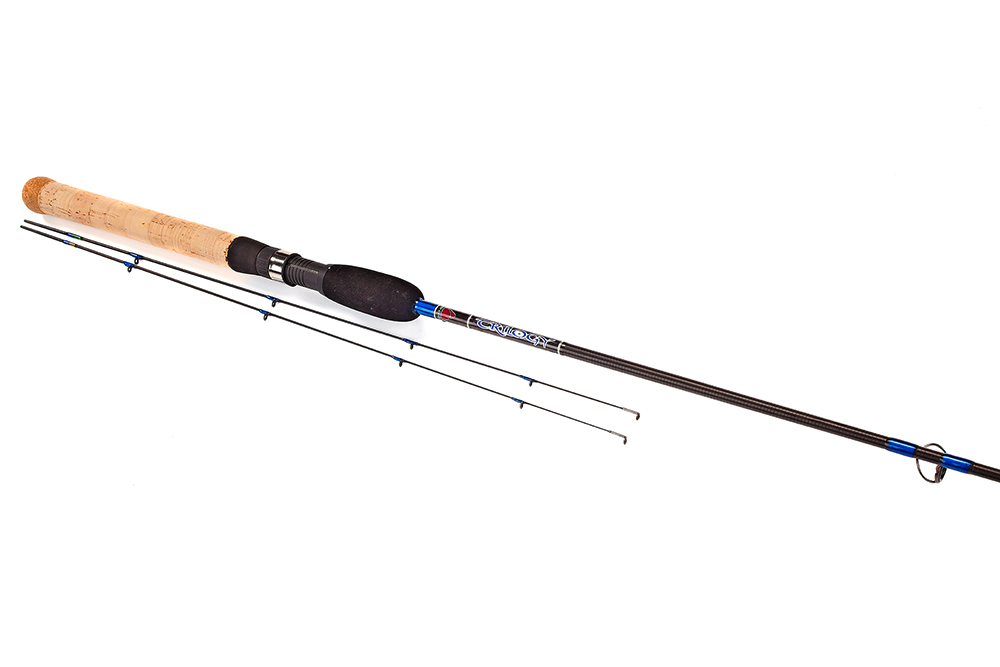
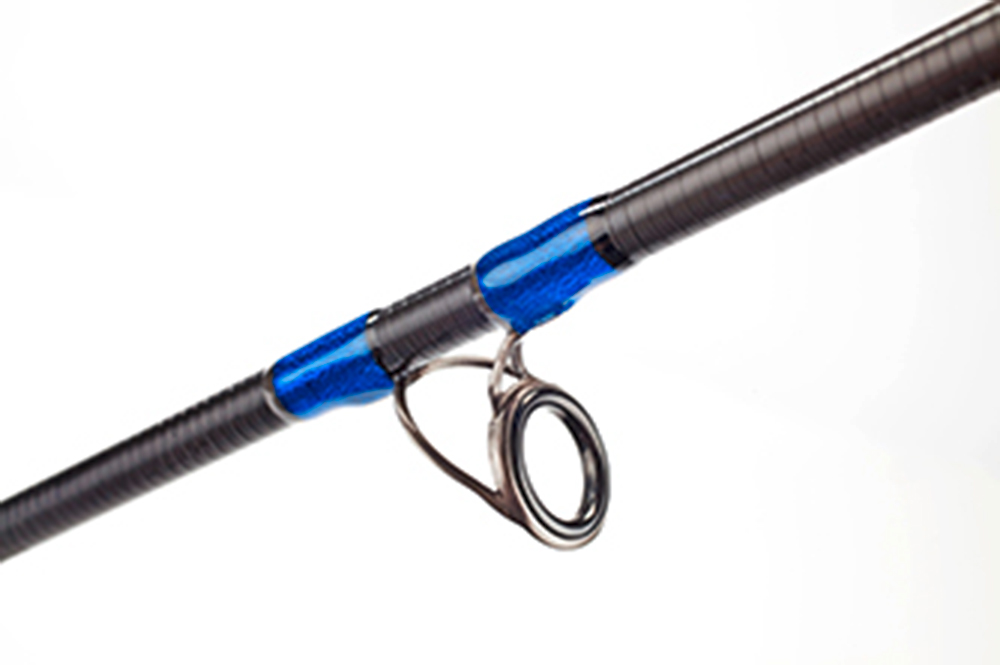
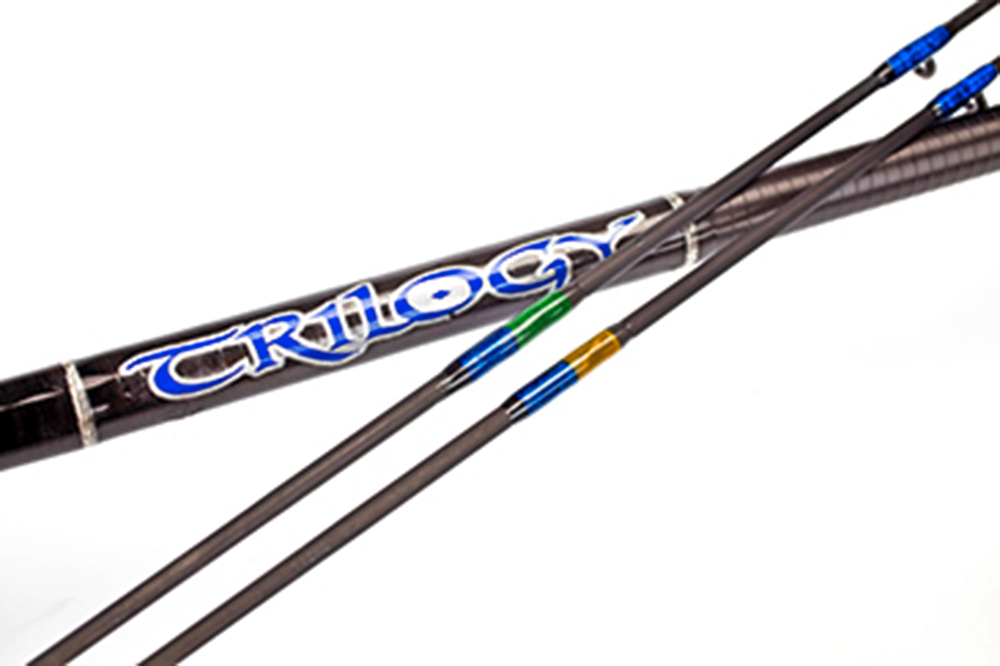
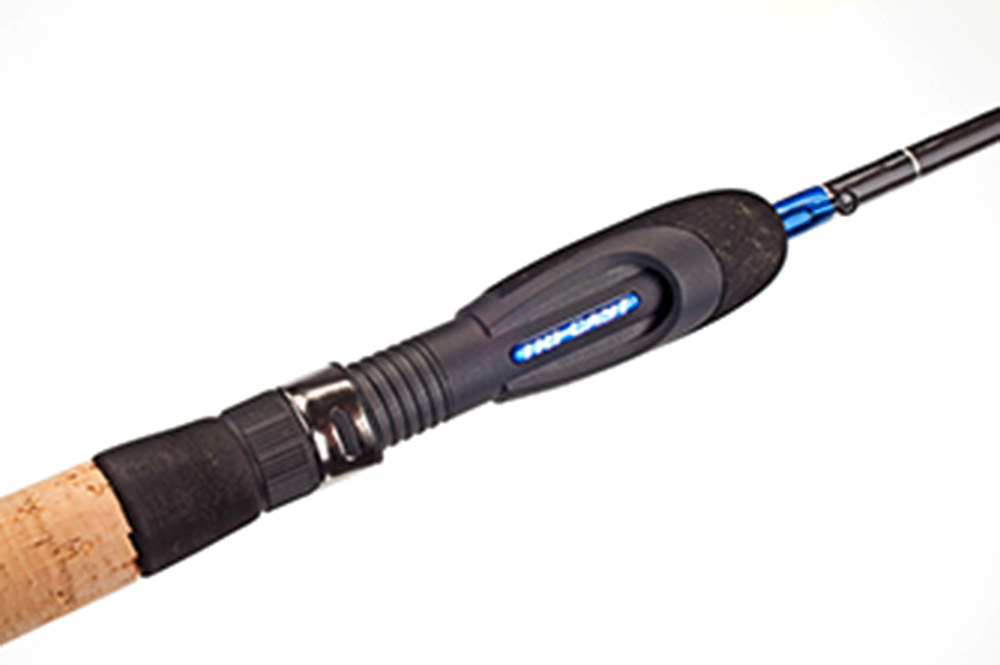
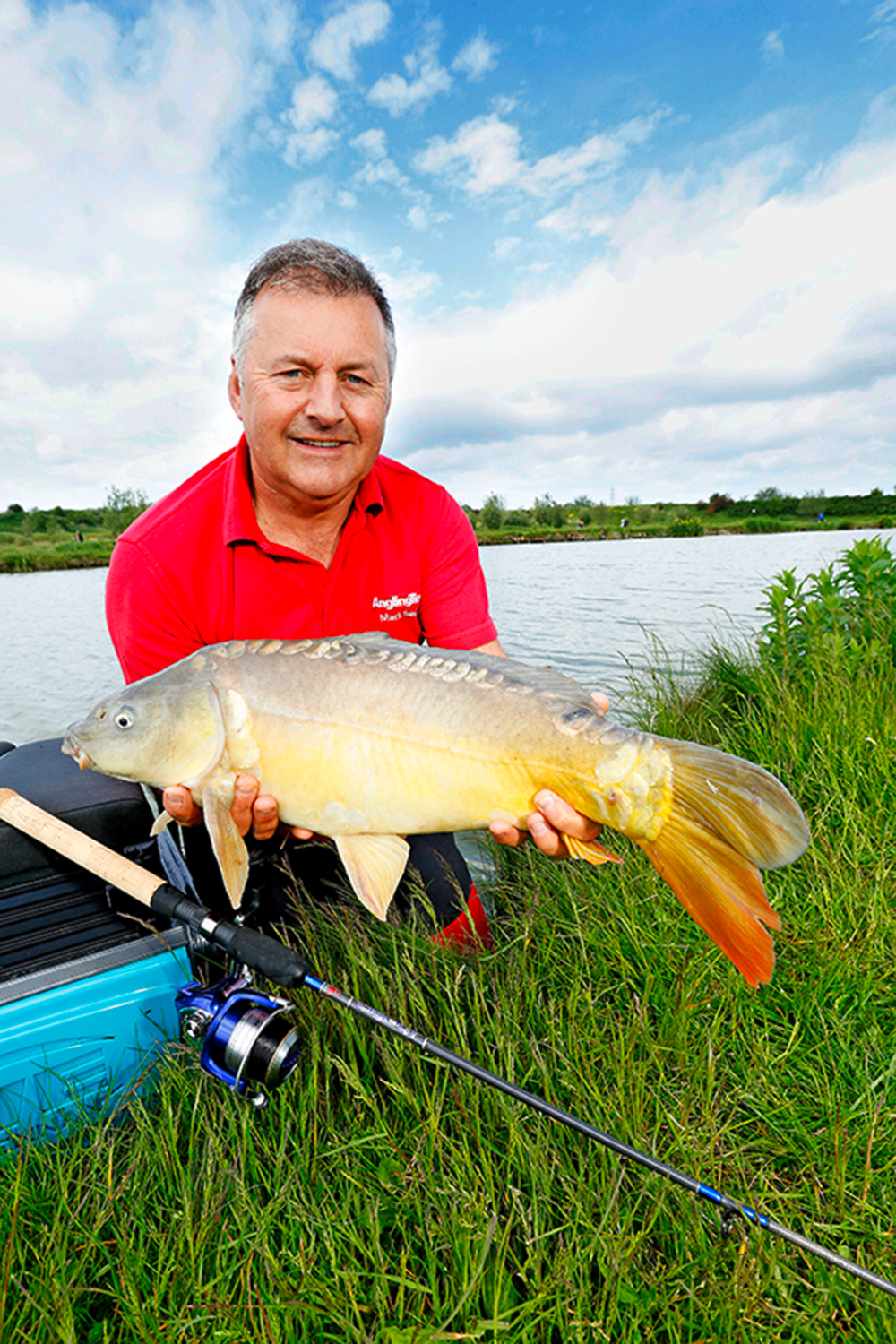
PAY AROUND
£109
I must confess that as I slid this single-sectioned rod from its transit tube my first thought was: ‘What am I supposed to do with this thing, then?’ No emails please!
To the very best of my knowledge the quaintly-named Tri-Cast Pond Wand (it only says Trilogy on the blank) is the only one-piece match/pleasure fishing rod I have ever come across.
At only 4ft 10ins long, without one of its two 21ins supplied quivertips fitted, it’s also got to be one of the shortest.
But my question was quickly answered when I rang Tri-Cast’s brand manager Steve Hopkinson. He told me he had designed the Trilogy Commercial Pond Wand himself, to be used on the pole line when weather conditions make pole fishing difficult.
Apparently Steve had lost out on a probable match-winning peg when the wind had picked up so strongly that it made fishing at 16m nigh-on impossible for him – let’s face it, we’ve all been spun round on our seatboxes by the wind at some point in our career.
What Steve thought he needed to combat the elements was a diminutive wand-like tool which could be used to accurately swing a small feeder or straight lead underarm and on to his pole line without having to tighten up to it and risk moving his bait offline.
The construction of a single-sectioned rod isn’t quite as easy as you might think, mainly because the length of taper is vastly reduced. This doesn’t give the technical design team much to play with in terms of the casting and fish-playing performance of a blank.
But, as you might expect from one of the UK’s leading carbon manufacturers, Tri-Cast appears to have cracked this conundrum with ease.
The ridiculously slim blank is built from the same high modulus carbon cloth as the firm uses for the other members of its Trilogy Commercial rod family. It’s fitted with five low-profile Ultra-Light lined guides (which, incidentally, are made in the USA), and is nicely furnished with electric blue whippings, with an additional whipping at the end of the carrier section to prevent the fine-walled carbon from splitting when fitting its 1oz or 1.5oz push-in quivertips.
So, without further ado, let’s find out how this tiny terror performs on the bank. The strip lakes at Decoy are rightly renowned for two things – the large size of their occupants (great) and the endless Fenland easterly wind which seems to blow non-stop (which isn’t that great). But in this rare instance the hooley provided ideal testing conditions.
Without a doubt, the first thing you notice will be an almost overwhelming reluctance to cast it as you normally would – overhead. Yes I agree, that might sound a bit far-fetched, but believe me it isn’t. You WILL want to flick it out underarm.
I have used plenty of petite drop shot rods, overhead casting them without a problem using light lures or jigs. But not so with this rod. It just seems to lend itself better to a gentle swing-out.
It’s not as though the blank won’t cast properly, as later on during the live test I chucked a fully loaded 15g Method feeder 25m with no problems.
The single-section blank manages to generate a completely perfect flat-spot-free parabolic fish-playing action, and considering its diminutive dimensions it has all the tenacity of an angry Jack Russell, happily hanging on to anything you might hook into.
As my confidence in the rod began to rise I actually clipped up the reel at 16m to keep my feeding and accuracy really tight, and to see if I’d get away with it if something really big came along.
Yes, I did indeed manage to bank a near-double, but it was all bit too heart-stopping and not something I would recommend.
There simply isn’t enough stretch in the mono at that distance, so you’re more likely than not to be snapped off if there are real zoo creatures about.
Basically it’s easier and much safer to tie a little bit of fine pole elastic on to the reel line as a distance gauge, or have a set of wrap sticks set up behind your box – which for 16m distance is about 4.3 wraps on 12ft markers.
VERDICT
Basically this delightful little rod is likely to be the most fun you’ve ever had with 6ft of carbon fibre. It weighs next to nothing, is easy to transport once you’ve removed the quivertip, and it easily fits inside a standard ready rod holdall. The short handle makes it easy to manoeuvre, and if you set it up with the tip pointing virtually straight out in front of you, there’s no need to adjust the line after casting to keep you bang on the money every put-in.
Shimano Beastmaster CX Commercial 9ft-11ft Float rod
The new Shimano Beastmaster CX rod range has been developed for small to medium-sized carp. Much modern match fishing takes place at 30 yards, so each CX Commercial blank has a parabolic fish-playing action that absorbs the power of the fight, preventing hook-pulls. There are Feeder and Float rod versions, ideal for all but the heaviest Method, straight lead and pellet waggler tactics.
PAY AROUND
£109.99
Hooray – at long last it looks like summer is on its way!
The daffs have bloomed, and on all the fisheries I have visited broods of downy ducklings swim in unison as if tied together.
As the water warms, carp are drawn inexorably towards the surface for some community sunbathing. So how can we tempt them into taking our baits?
Floating dog biscuits work, but they are banned on commercials so it’s down to pellet waggler, or wag and mag tactics.
Unless I have to cast miles, an 11ft two-piece float rod is usually my weapon of choice. Sometimes, though, especially when targeting F1s on snake lakes, casting tight up against islands or even dobbing, there’s definitely a case for an even shorter rod. Its added casting accuracy can pay dividends.
As if to second-guess me, Shimano has released a brilliant line-up of new Beastmaster CX Commercial rods, including this rather nifty 9ft/11ft model.
Not only will it cope with most commercial fishery float work, but the carbon blank includes a 27ins dolly-butt section that fits snugly into the cork and EVA handle, giving you a well-balanced 9ft rod.
In their shorter mode, dual length float rods can either be much too pokey, or limper than a Julian Clary handshake, leading to constant hook-pulls or protracted battles with fish on an under-powered blank. But after spending time with the new Beastmaster CX 9-11 I can happily report that this classy looking all-black blank offers a medium parabolic action, with an almost tippy casting performance, at both its 9ft and 11ft lengths. I’d guess that England Feeder international Rob Wootton and ex-Shimano consultant Mark Pollard had quite a bit of input into this rod’s development.
Despite its slim profile and lightweight Bio-fibre carbon build, the blank has more than enough beef to cope with the biggest of fish. It’s possibly better suited to casting floats from 4AAA upwards than it is small wagglers, and Shimano has given it a maximum casting weight of 15g, which gives it plenty of all-round scope.
VERDICT
This great new float rod from Shimano is aimed squarely at the match angler – well thought out, cleverly designed, with a build quality and furnishings normally only associated with top-end flagship models. The 9ft/11ft blank has the flexibility to be used on all types of commercials with reel lines and hooklengths of 4lb-8lb.
Mark Sawyer
Shakespeare Superteam Match 13ft rod
TECH SPEC
Length: 13ft
Power rating: 6lb
Pieces: 3
Handle: Cork/EVA
Rings: Zirconium
Extras: Side keeper ring
PAY AROUND
£89.99
You could do worse than use the Redditch tackle giant’s products down the years as a means of charting the development of the modern match fishing rod in terms of materials, furnishings and specifications.
A potted history of Shakespeare notables would show the fibreglass Match International as a rod ahead of its time. This was followed by the excellent, if rather expensive, President which I believe was the first carbon fibre rod to be built with a spliced-in tip.
Then we had the superb Mach 2 Boron which held centre stage with matchmen for many seasons, but was eventually superceded by the Mach 3 carbon. Since then we have been blessed with the firm’s high-modulus carbon Superteam model, launched in 2014.
Shakespeare did, of course, introduce many other match rods but those listed above were widely recognised as being as good as it got back in the day. Remember, it wasn’t all that long ago that match fishing was all about using a waggler or stick float to catch winning nets of roach, chub, dace, perch or bream, the tool of choice being a 13ft, three-piece.
The finesse to deftly flick a small waggler across a canal, cleanly pick up line from the surface when long trotting and cast bodied wagglers or sliders into deeper water on rivers and lakes, are qualities we expect of any good match rod.
That brings me nicely on to Shakespeare’s Superteam 13ft match rod which really is a jack of all trades and will take all these tasks in its stride. Yes, this rod was first introduced a few years back, but that doesn’t make it in the least bit tired or dated. It remains to this day one of the best all-round match-style float rods that few others can hold a candle to.
The three-piece pencil slim carbon blank is nice and light in the hand, making it easy to hold for long spells, and a requirement of any good river rod. Worthy of note are its zirconium oxide guides that enable almost friction-free line travel, very useful when trotting a river at the pace of its current.
Its fast, progressive action doesn’t lock up under stress, so when you hook into a really big fish the blank will absorb and keep absorbing its runs and lunges with no fear of the line snapping. At the same time it has the backbone to boss fish away from snags.
Live testing the rod was interesting, as I already had some idea about the Superteam’s performance from an earlier Angling Times review. This time, rather than take it to a carp puddle or river, I thought I would test the blank’s sharpness and line pick-up qualities on a deep venue I knew held some big roach and decent ide.
Waggler tackle with small hooks and maggots, coupled with a nagging easterly side wind, wasn’t perhaps the ideal mix for a decent day’s fishing. But I needn’t have worried – Shakespeare’s finest 13ft of carbon cast a hefty three-swan insert waggler with ease and unerring accuracy.
With the float set at 12ft deep, line pick-up speed was central to hitting bites and the rod didn’t disappoint, connecting time and time again with the most tentative of enquiries.
As the fish responded to the feed they started coming up in the water, and bites became lightning-fast.
Now the line needed to be whipped from the surface at a rate of knots, and yet again the rod performed impeccably. Not merely a jack of all trades but a master of them all.
VERDICT
Another pure class floatfishing rod from the Shakespeare stable and perfect for silverfish, the Superteam 13ft is tactically flexible and ultra-reliable. Use it with confidence, however light the terminal tackle. Its anti-locking nature and progressive action allows it to cope with sizeable fish, something that cannot be said of many old-school float rods.
Middy Baggin’ Machine Synaptic Duo rod
TECH SPEC
Two tops: Waggler and Feeder
Features: F-Lined Guides, hook retainer, two spare quivertips, Synaptic carbon design, ergonomic reel seat.
Casting weights: 2g to 25g Wagglers; 10g to 45g Feeders.
PAY AROUND
£109.99
This Middy Baggin’ Machine Synaptic float and feeder Duo is ideal for anglers on a budget who want a single rod to cover a multitude of different methods.
It has two separate top sections and comes with two push-in quivertips to make up a 10ft feeder rod that’s perfect for parrot cage commercial fishery pegs. With the feeder top, the rod is capable of fishing Method feeders up to 45g as well as cage and blockend feeders and straight leads. It has a soft progressive fish playing action, but with loads of power down the blank, and will handle reel lines up to 10lb with hooklinks up to 6lb. There’s also plenty of power to land double-figure carp, and the rod feels nicely balanced and responsive.
During a live test at the impressively stocked Lou’s Lake at Cambridgeshire’s Decoy Lakes, the rods mettle was well tested with plenty of F1s, as well as the odd larger carp. It cast a fully loaded Method feeder with impressive accuracy up to 30m with ease. The Synaptic blank is made from carbon and glass, which produces a very lightweight, fun-to-use tool, with an almost anti-locking action. Hook pulls are kept to the absolute minimum.
With the waggler top fitted, the rod is still 10ft in length, and will cast floats between 2g and 25g, making it ideal for up-in-the-water pellet waggler tactics. It can handle reellines up to 8lb and hooklinks up to 5lb.
The waggler section has a little more stiffness through its mid-section than the feeder top, but it still retains plenty of cushioning forgiveness, and is more than capable of absorbing last-minute lunges from even the largest of fish at the net, without risking hook pulls.
VERDICT
The Middy Synaptic Duo would make the perfect tool for the summer pleasure angler. Designed for use mainly on commercial carp fisheries, the rod is easy to transport and equally at home fishing a Method feeder or a pellet waggler.
Drennan Acolyte Feeder Plus 12ft rod
PAY AROUND
£189
Tackle giant Drennan has recently added two new models to its top-end Acolyte Feeder series. The latest 10ft and 12ft Plus rods are said to be the most powerful within the family, which includes 10ft, 11ft and 12ft Ultras with lighter actions, as well as an existing 11ft Plus rod.
The 12ft Plus model I tested is constructed using the same super-slim, two-section high modulus carbon blank featured on all Acolyte Feeders. But on this rod its mid to top section areas have been substantially beefed-up, to provide the blank with a higher weight loading point.
This not only aids its casting potential, enabling feeders and leads to be propelled greater distances, it also allows heavier weights up to 60g (2oz) to be used.
Drennan claims casts up to 60m are easily achievable, with even greater distances possible if you have good technique and, having live-tested the model on a large open water venue, I wouldn’t argue.
Other notable features are its stand-off SiC lined guides that help to keep the line well away from the blank, enabling the reel line to move quickly and smoothly through its guides, again to help distance. To that you can add a high-quality original Fuji screw down reel seat, full length 23ins-plus cork handle, and three push-in carbon quivertips, which have been selected to blend in with the rod’s parabolic fish-playing action.
So when, where and how would you use this rod? It’s certainly well suited for large expanses of open water – including rivers – and for all species of big fish.
The blank’s extra backbone provides plenty of casting clout which makes it ideal for all types of feeder and straight-lead tactics, just as I experienced at Lincolnshire’s big-fish mecca Bain Valley at Tattershall Thorpe.
The fishery’s windswept and open Halifax Lake holds some very big carp, which are noted for their fighting qualities. During the warmer months when the water is coloured, these can be caught on a pole in the margins, but once the colour starts to fade away, so do the fish. And like so many big waters in clear conditions, fish tend to shoal up towards the middle of the lake, a good 70m from the bank, more than a decent cast for any type of feeder rod, let alone one with such a slim profile as the Acolyte Plus.
Bread is the key bait, as it is on so many carp lakes in the cold. But Bain Valley is deep, so the punched disks need popping-up some three feet off the bottom to find the fish.
The longer hooklength adds yet another degree of difficulty to the cast. However, a decent sized bomb soon sorted this problem out. I did feel, though, that using an ounce-and-a-half of lead at around 65m-plus, the blank was on the upper limit of its capacities. To be fair, it was a very long chuck, and the Acolyte’s tip recovery post-cast, and its responsiveness, were never found to be wanting.
The rod’s push-in quivertips are faultlessly matched to its carrier section, with the 2.5oz, 3oz, and 4oz carbon quivers ideally suited for Method feeders and all hair-rig tactics.
Once a fish is hooked the blank’s action is surprisingly robust, and enables you to pull very hard without it ever feeling as though it might fold when under pressure – perfect for all big fish, not just carp.
The 12ft length enables a quick contact to be made with fish hooked at distance, and nothing that I caught while live testing, ever felt like it could dominate proceedings, which again for such a light and slim rod is very impressive.
I wouldn’t use it with small hooks and light lines, as I feel it had a little too much stiffness toward the end of the carrier section for gossamer gear, but as it wasn’t designed for that anyway, it’s hardly a criticism. I am, though, surprised that Drennan hadn’t moved the butt guide further down the blank, even if it meant losing a guide further up (think carp rod) as this may have added even more casting prowess.
VERDICT
Another sure-fire winner from Drennan. The Acolyte Plus feeder would be every bit at home on Boddington Reservoir as on the banks of the Severn or Trent. Thanks to its same-length design, and top ‘n’ tail retaining bands it is easily transported ready made-up, and is sure to be popular with long-range feeder fishing fans.
Mark Sawyer

